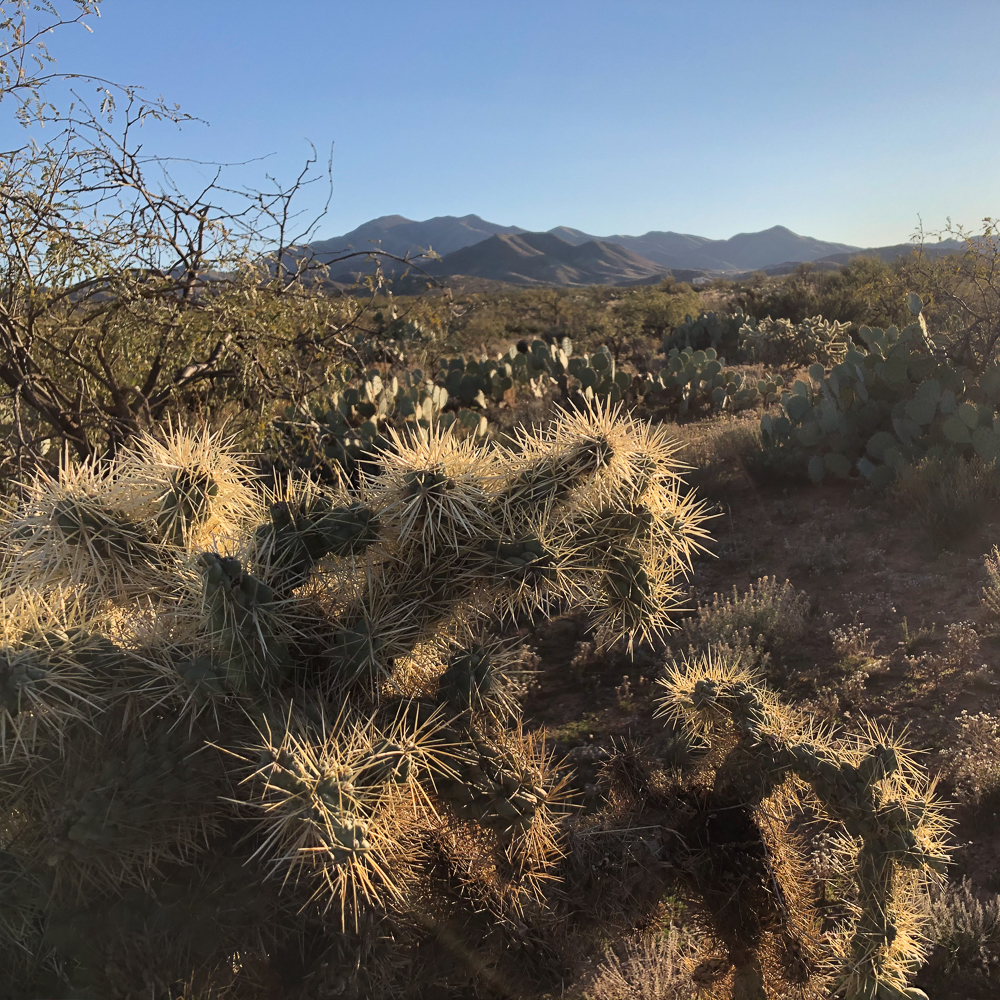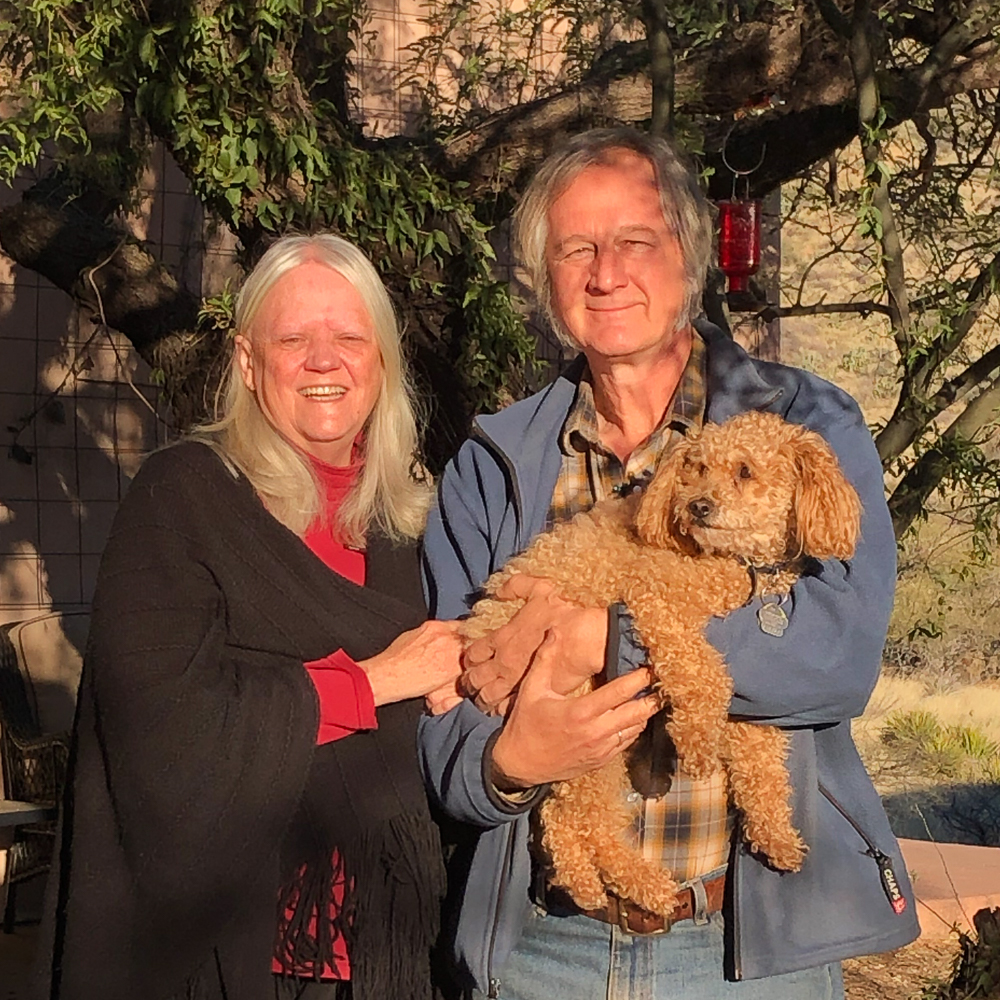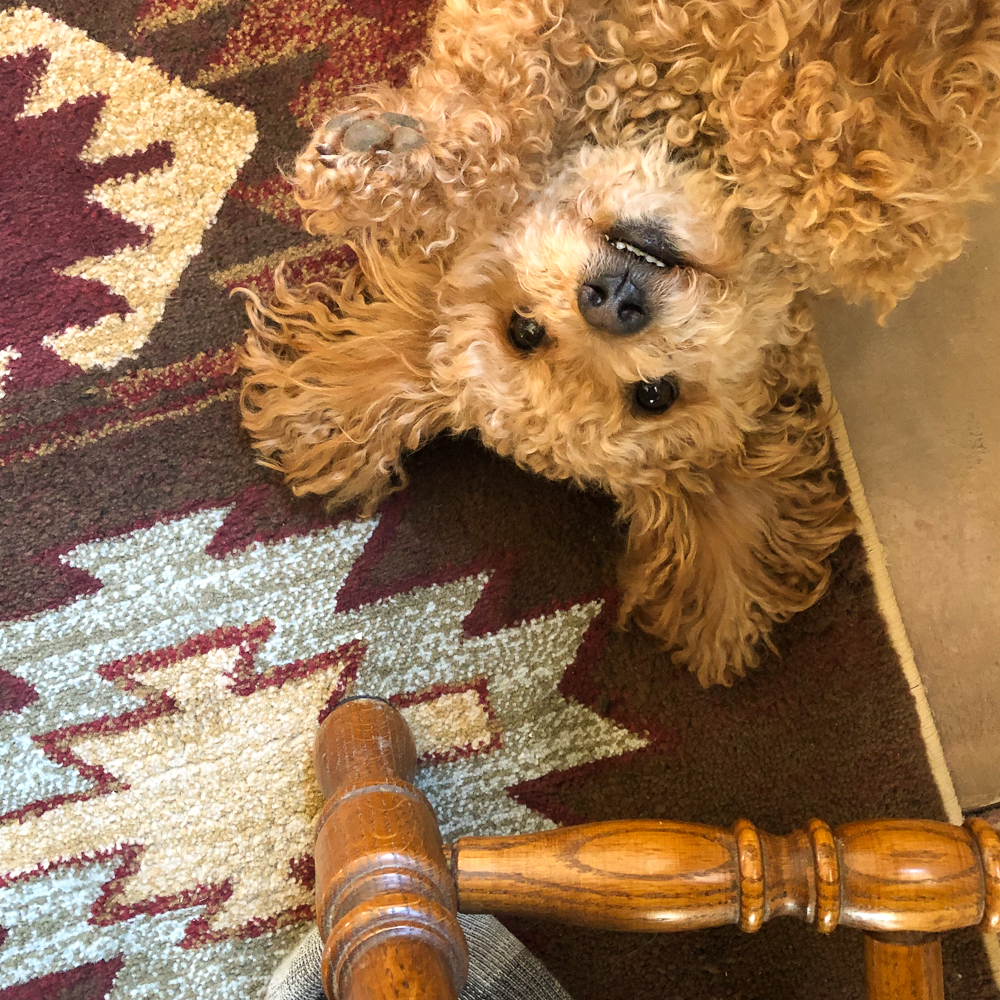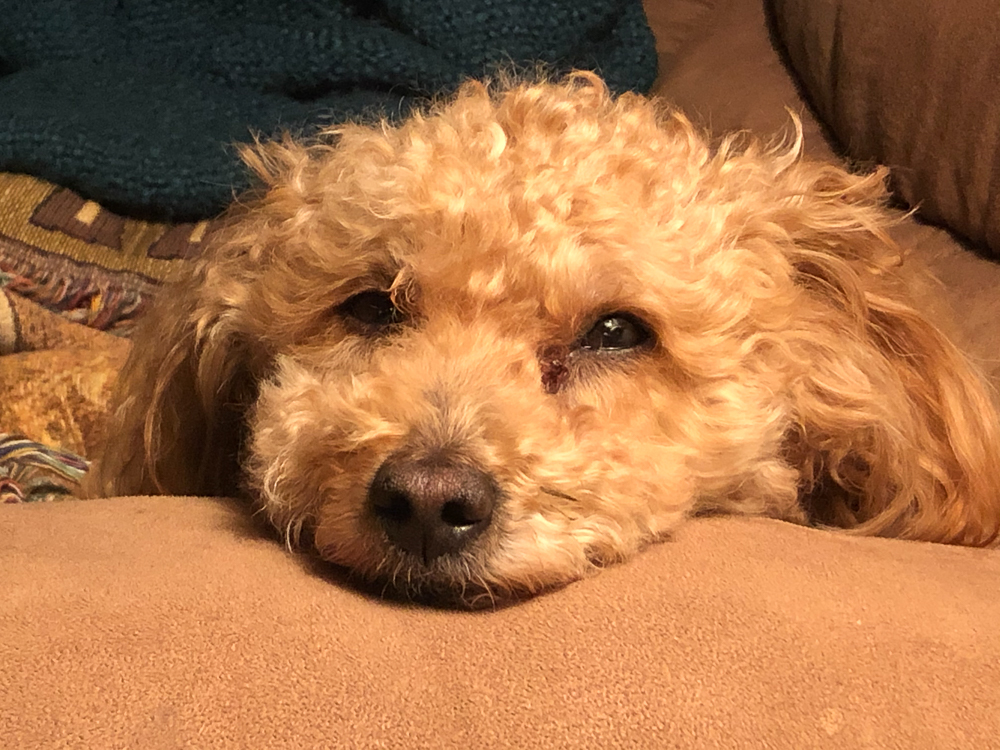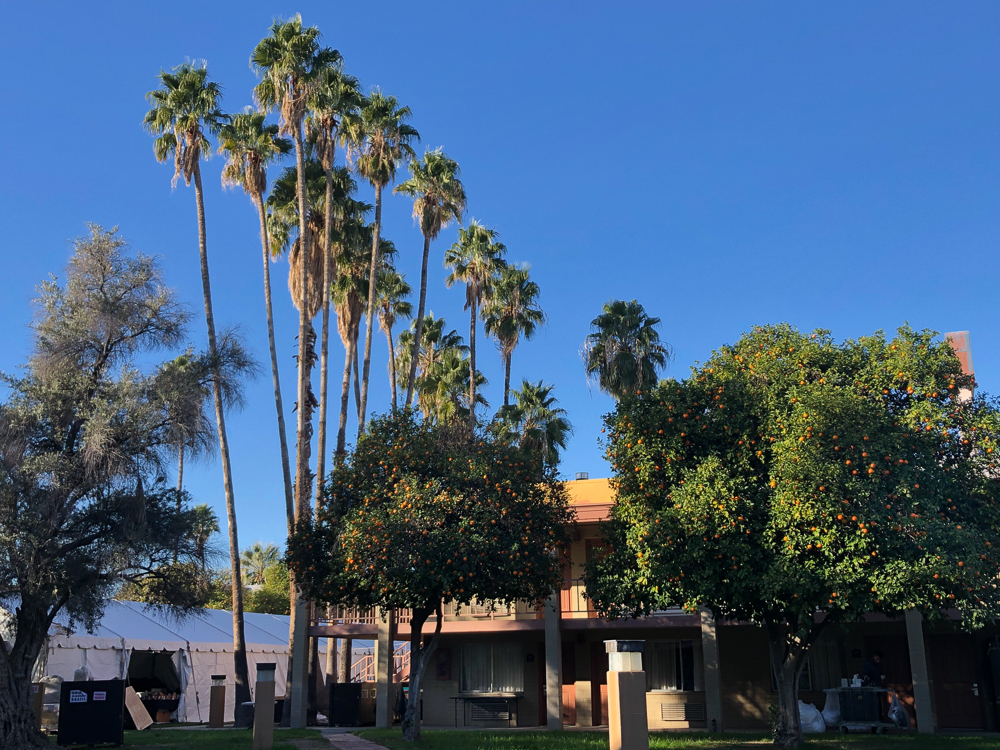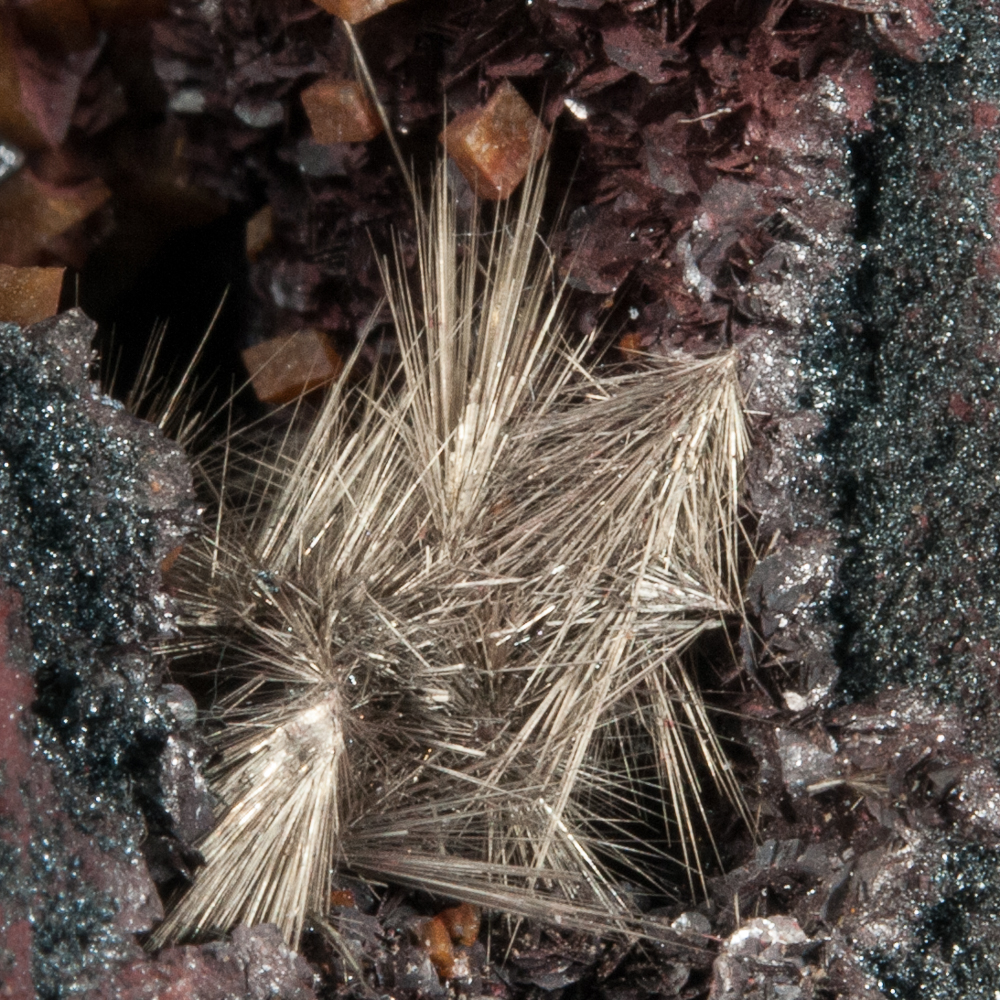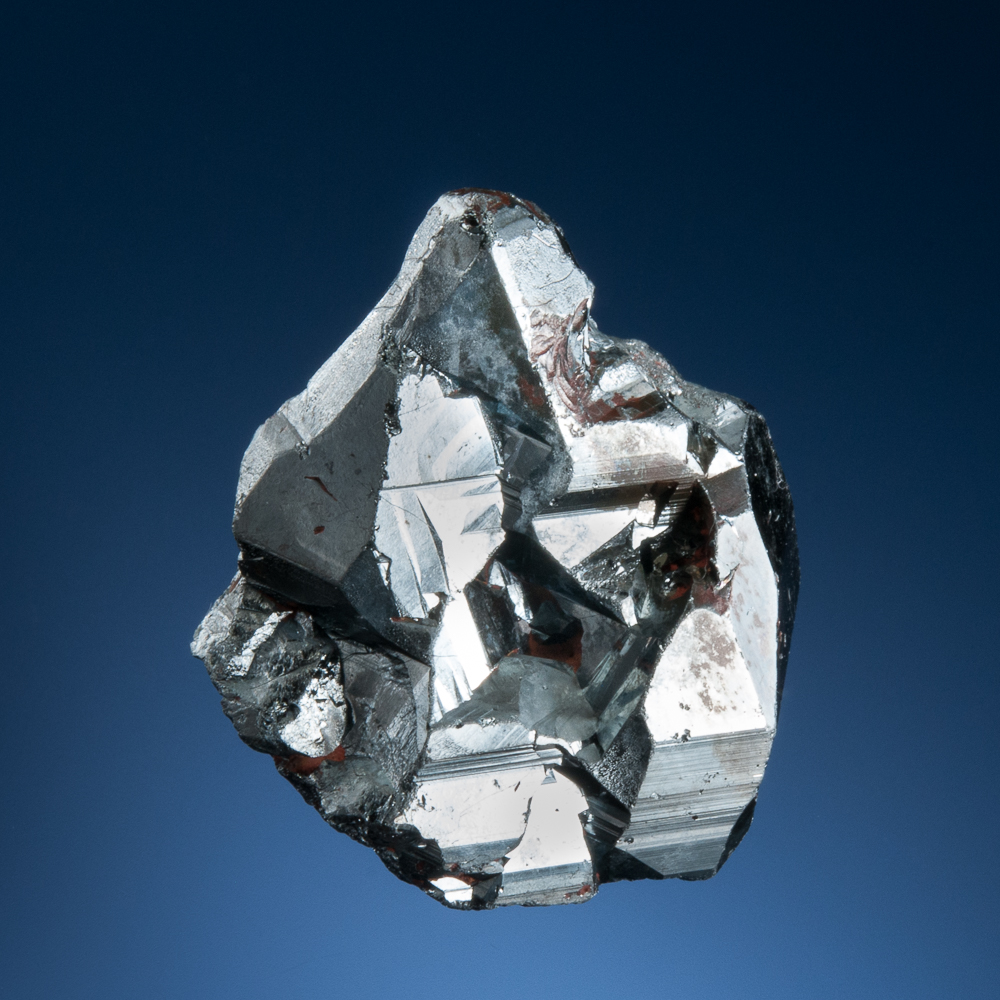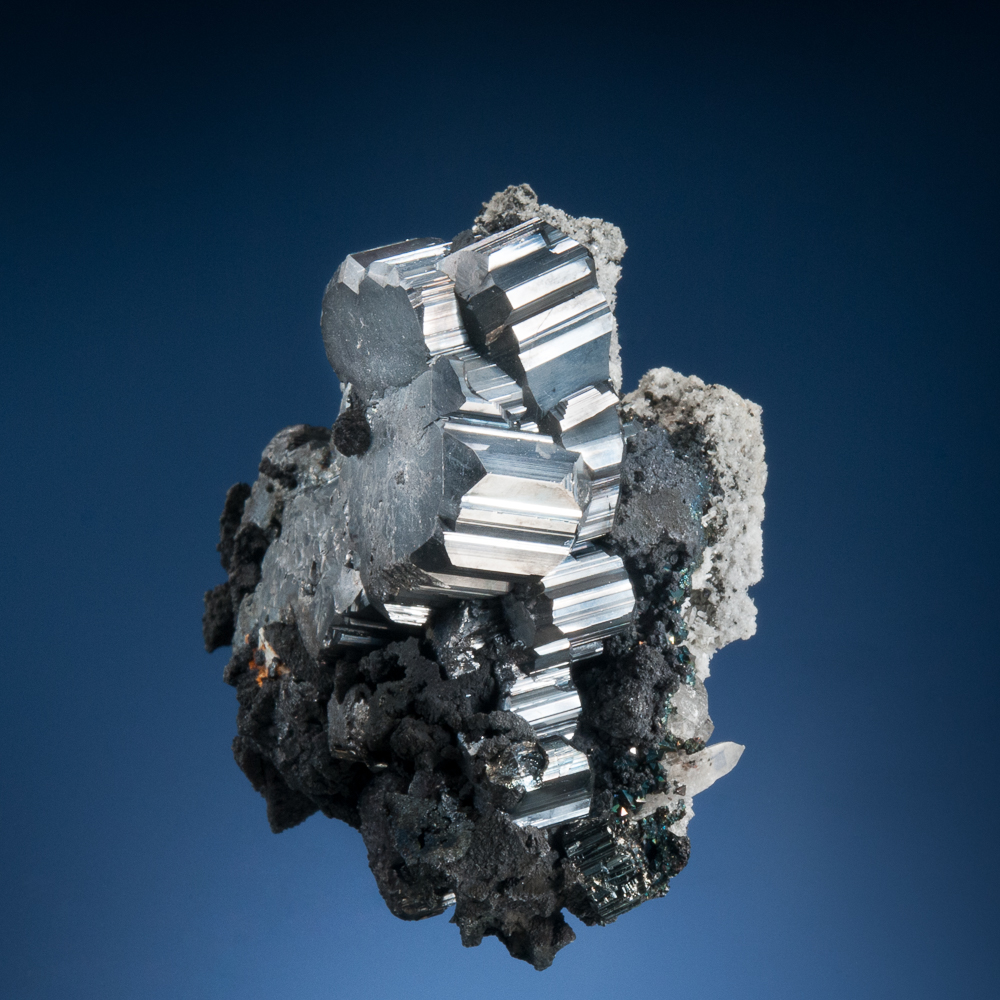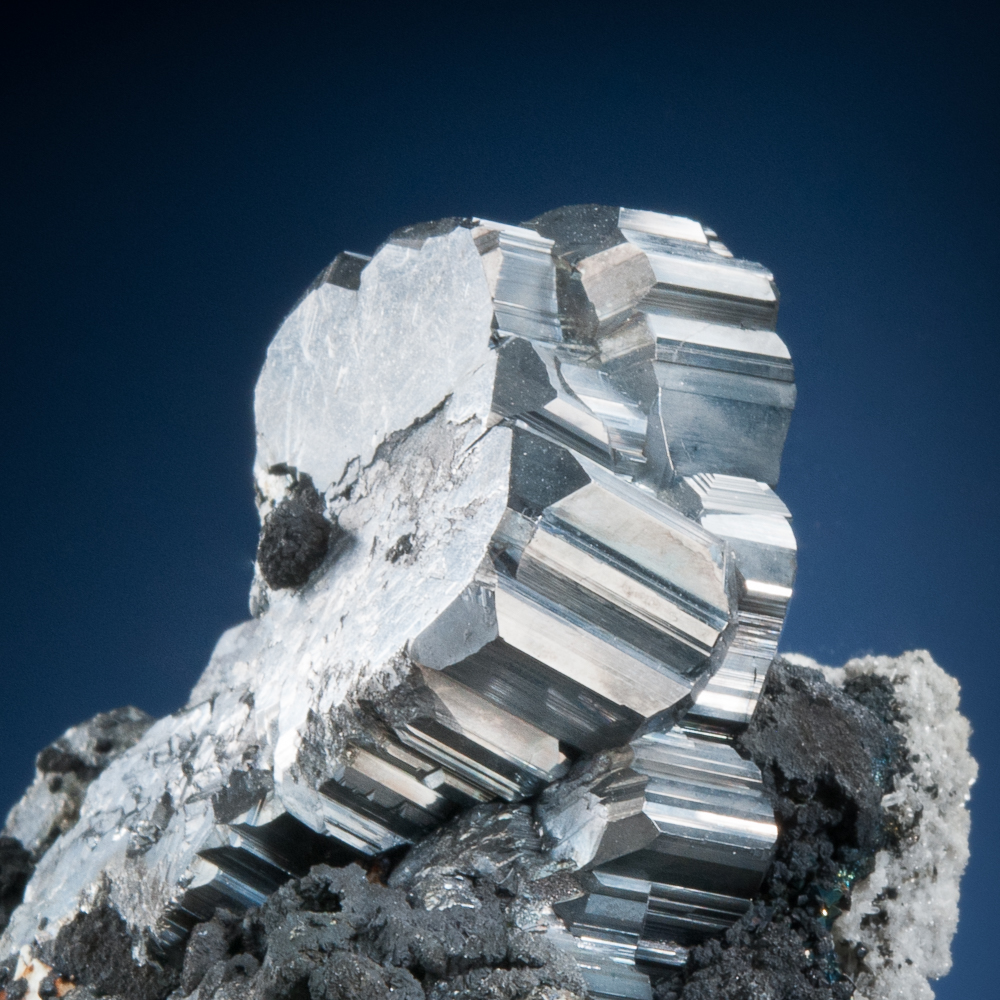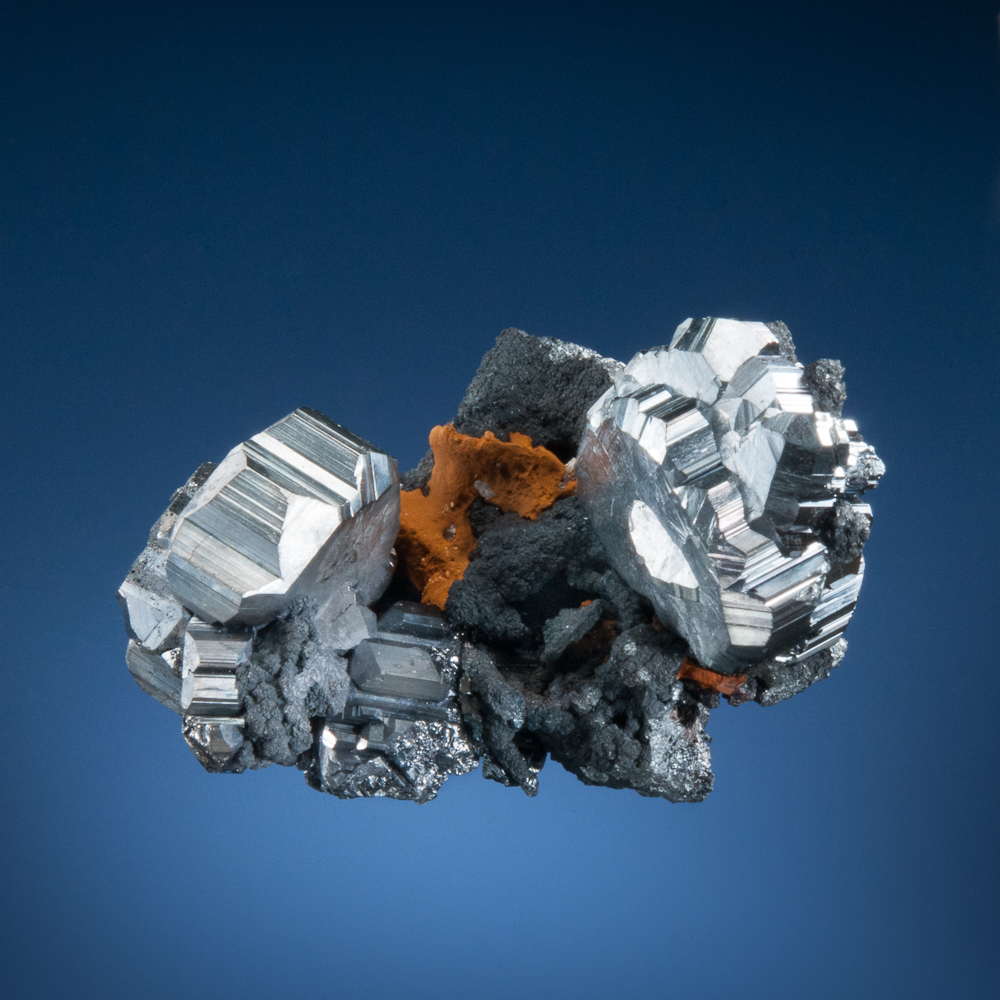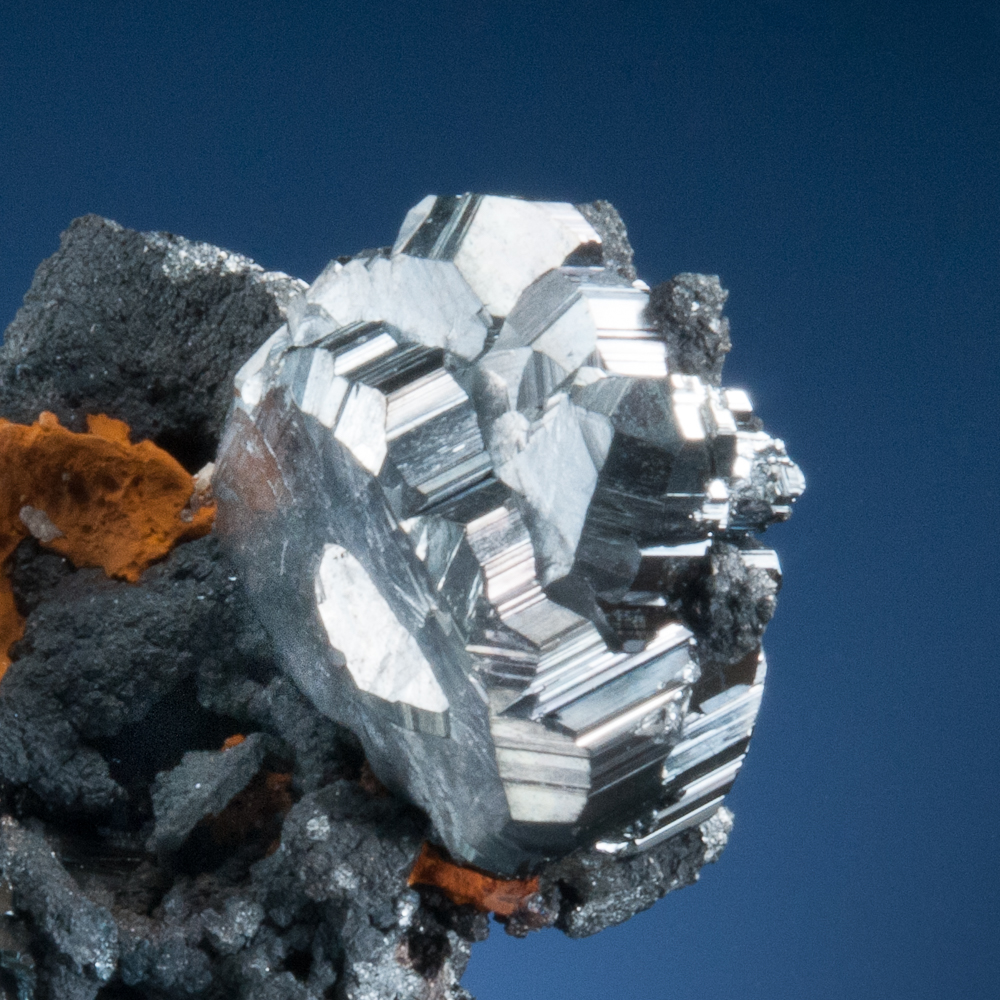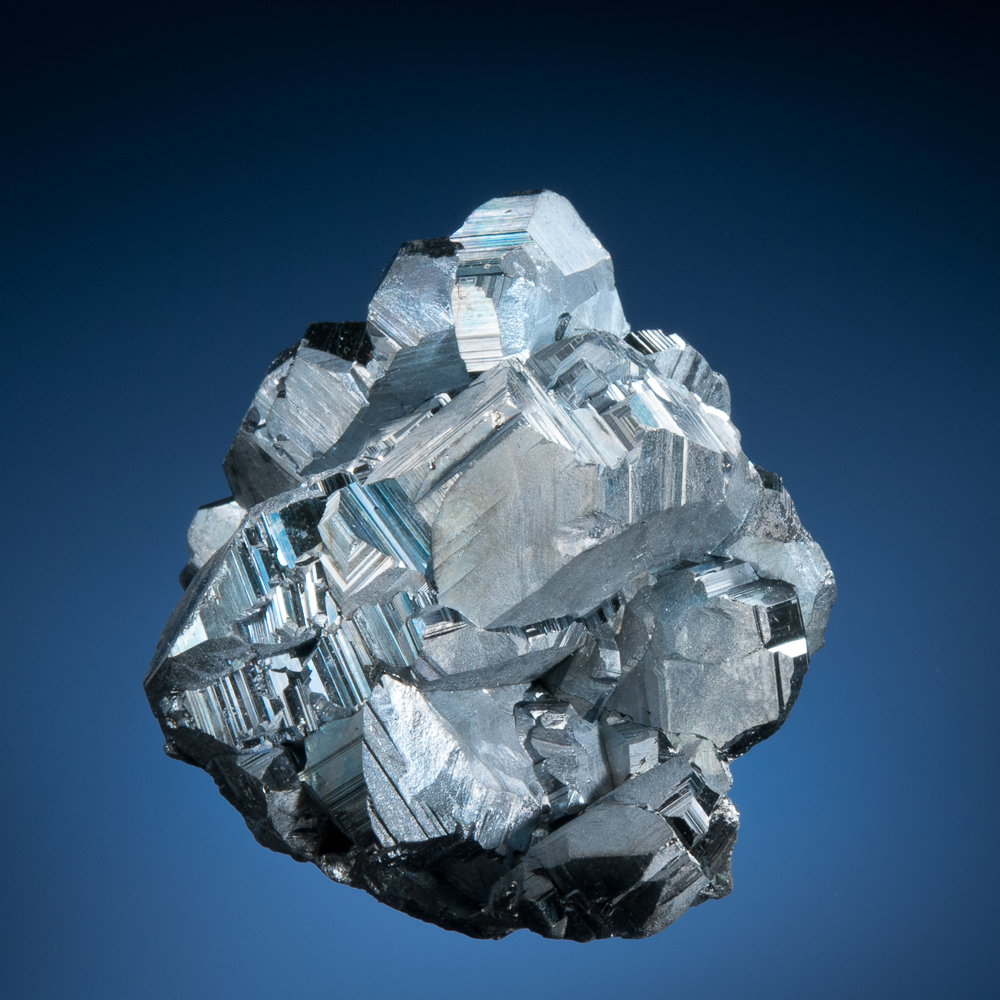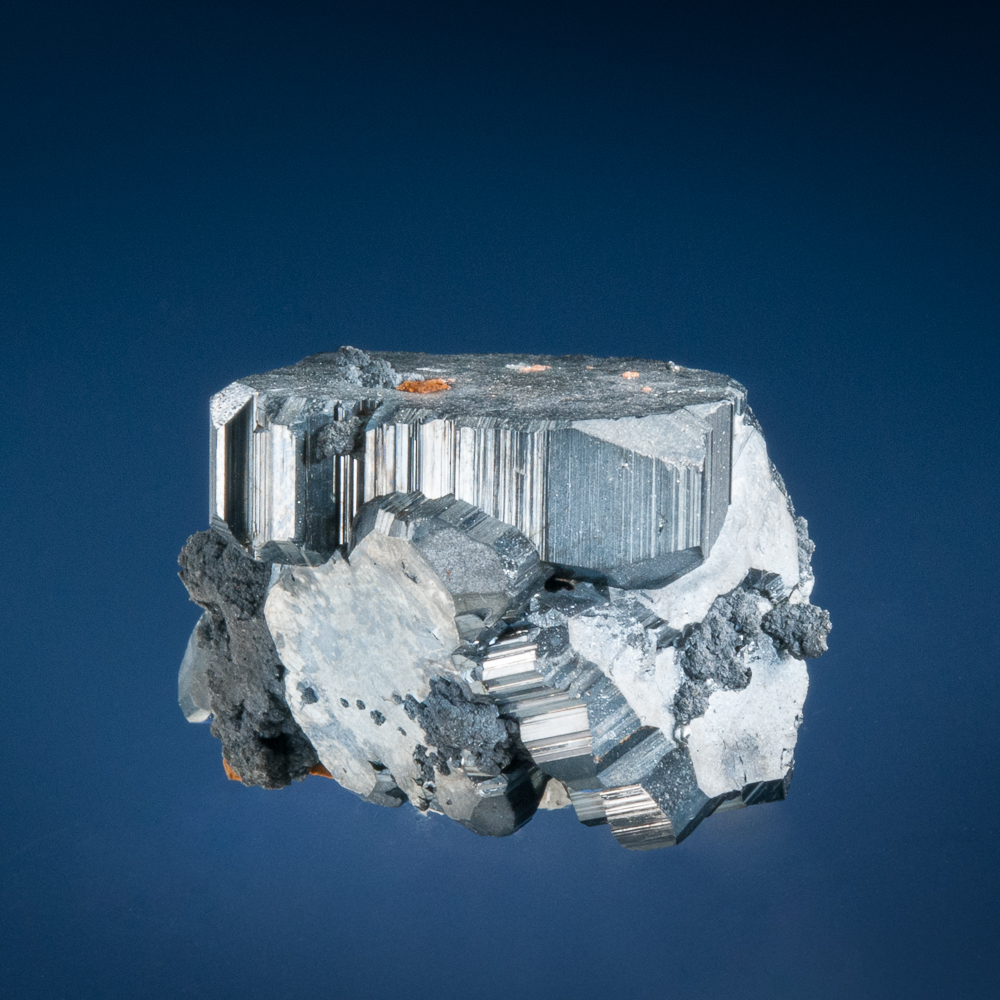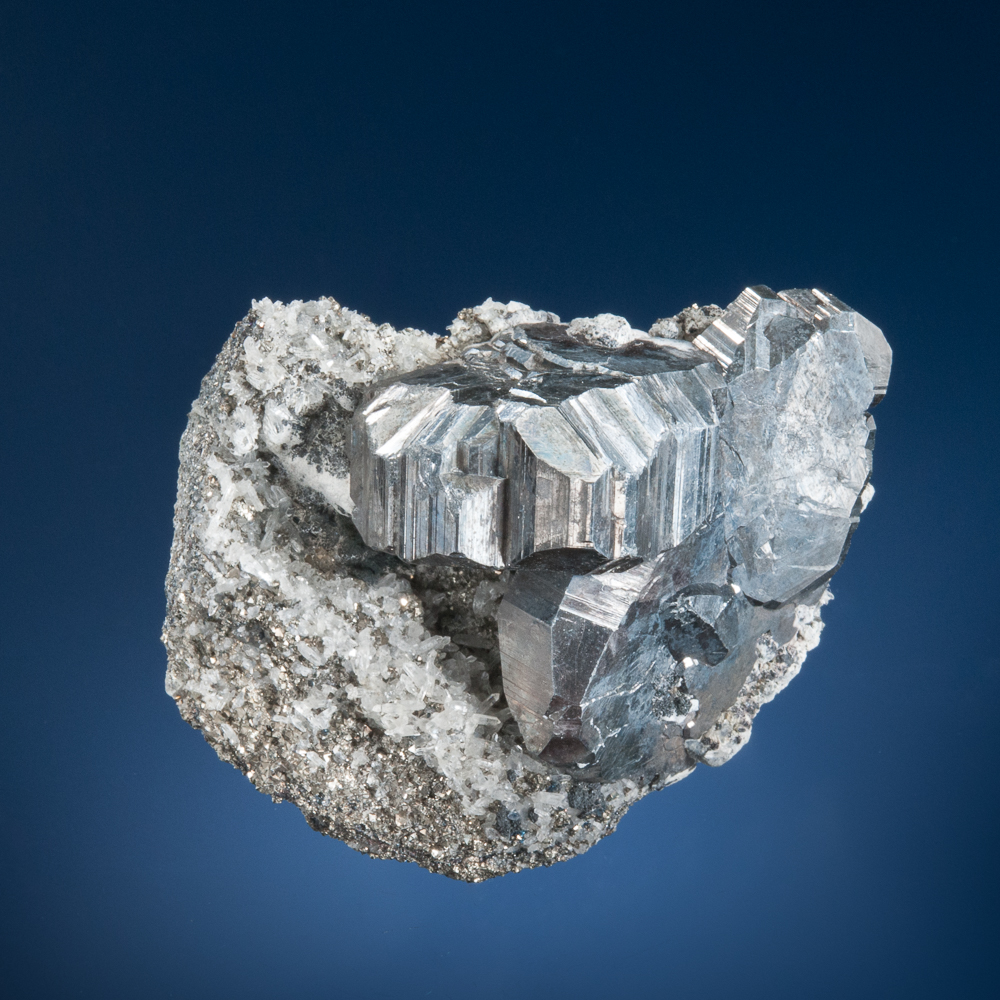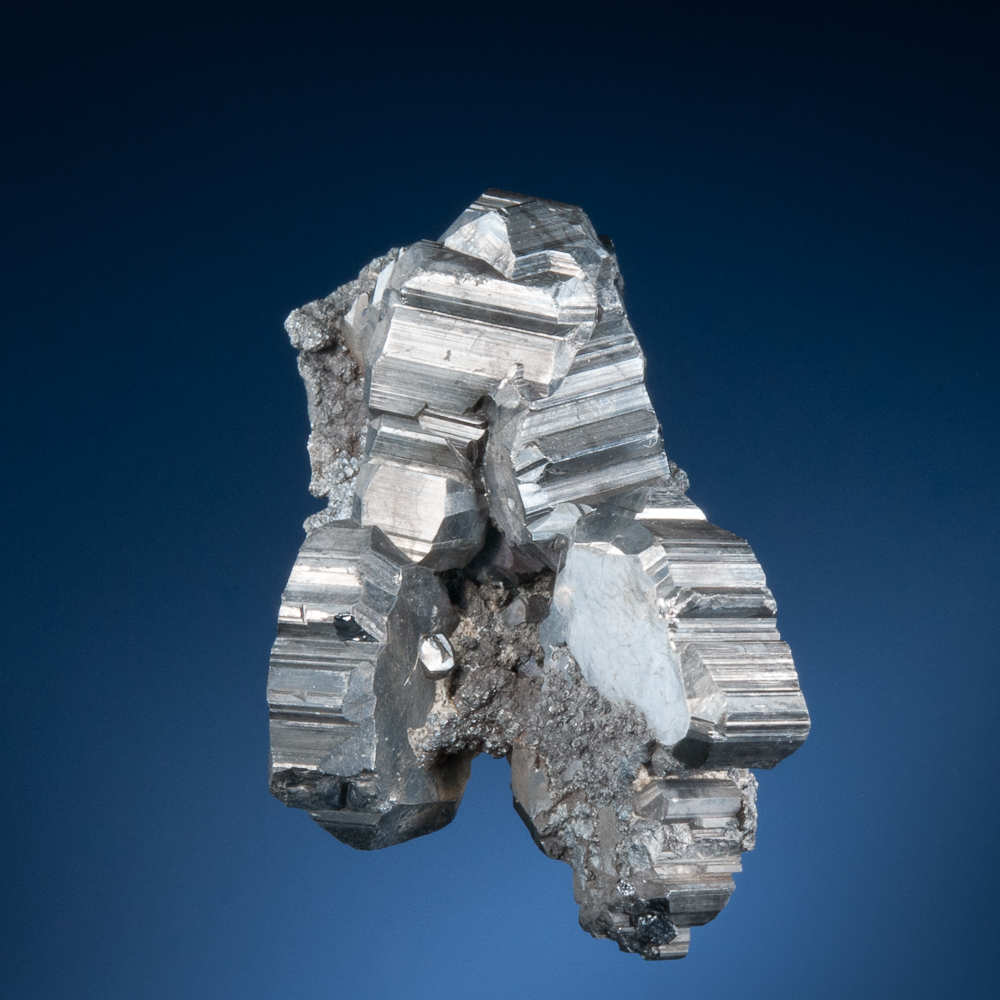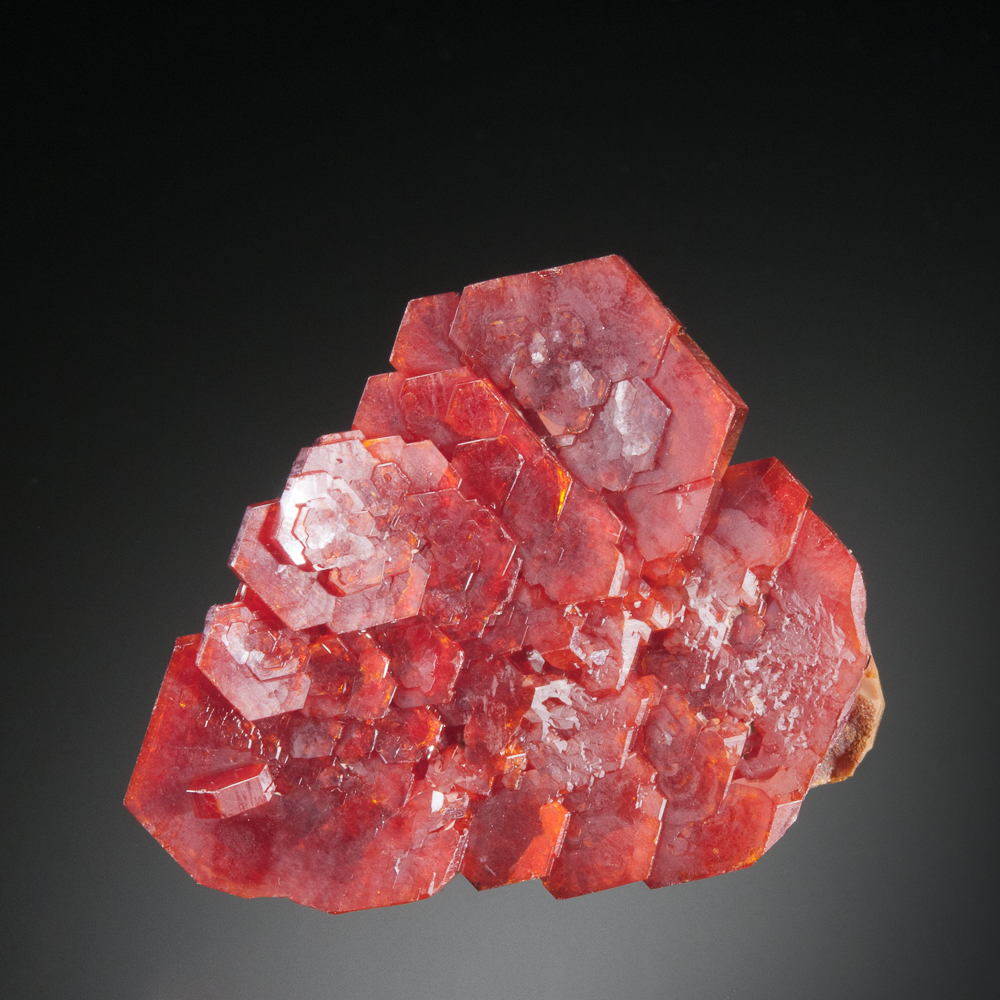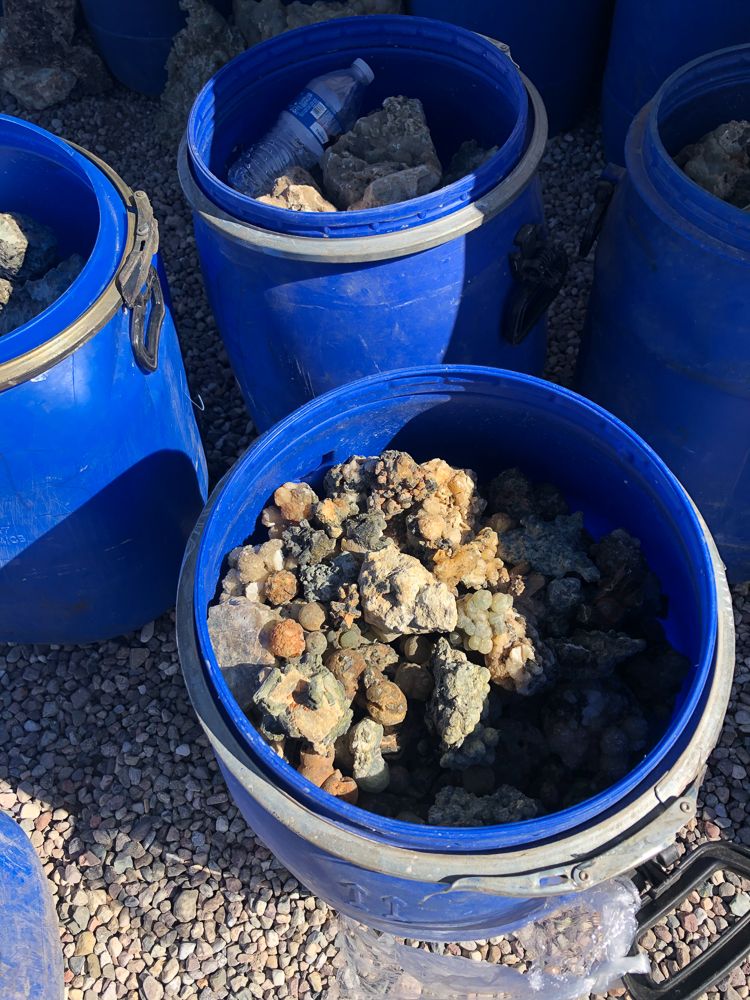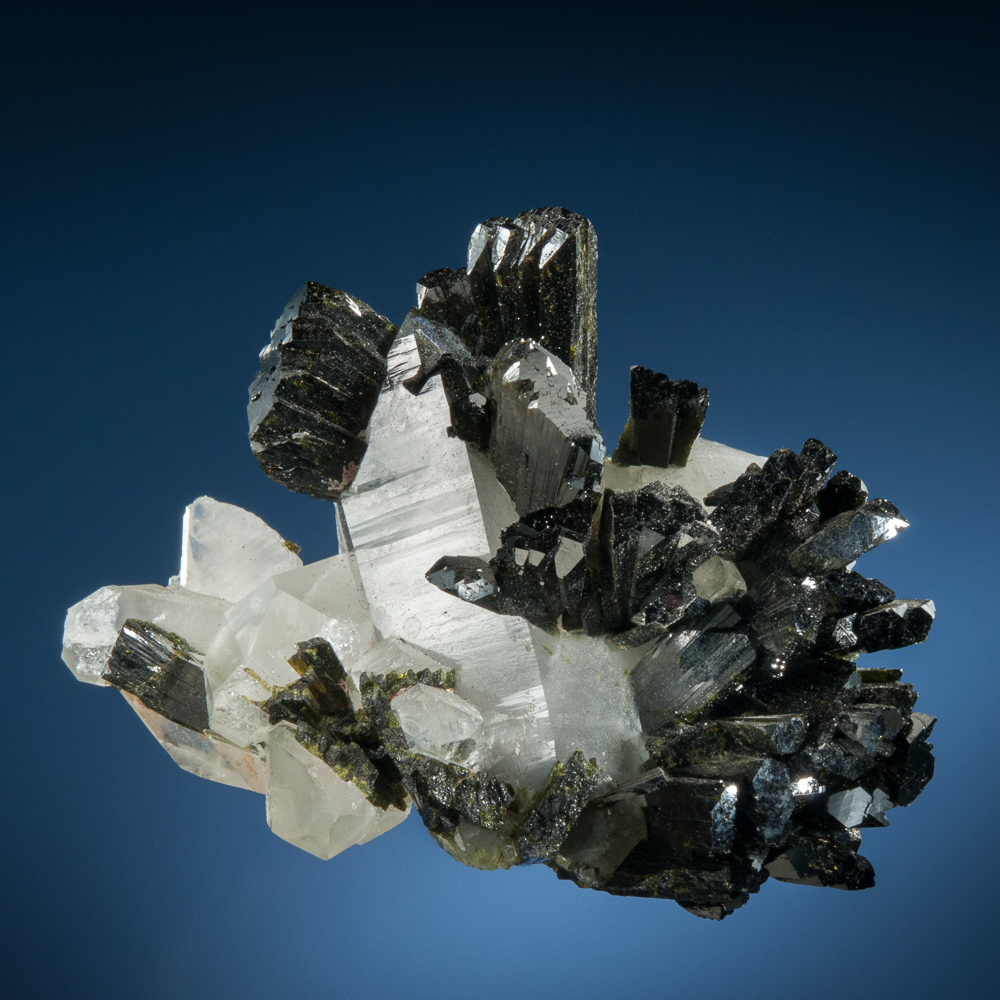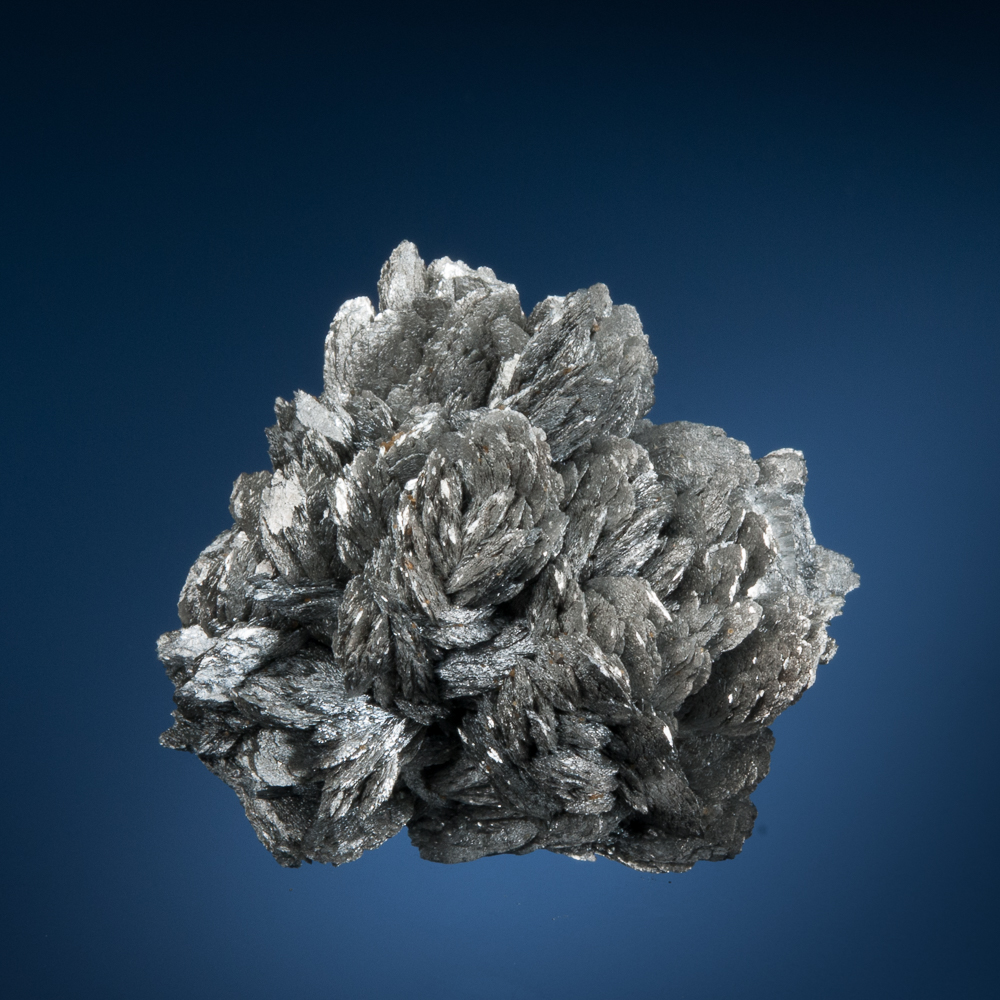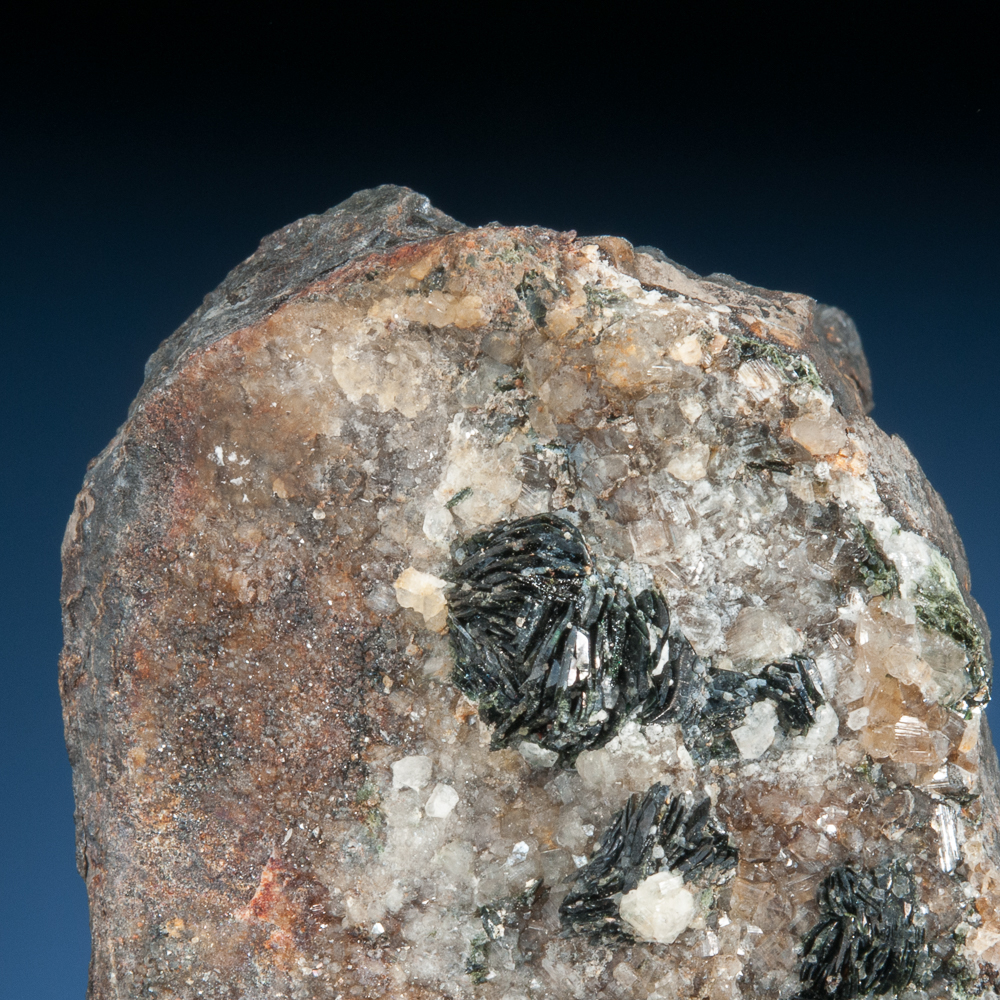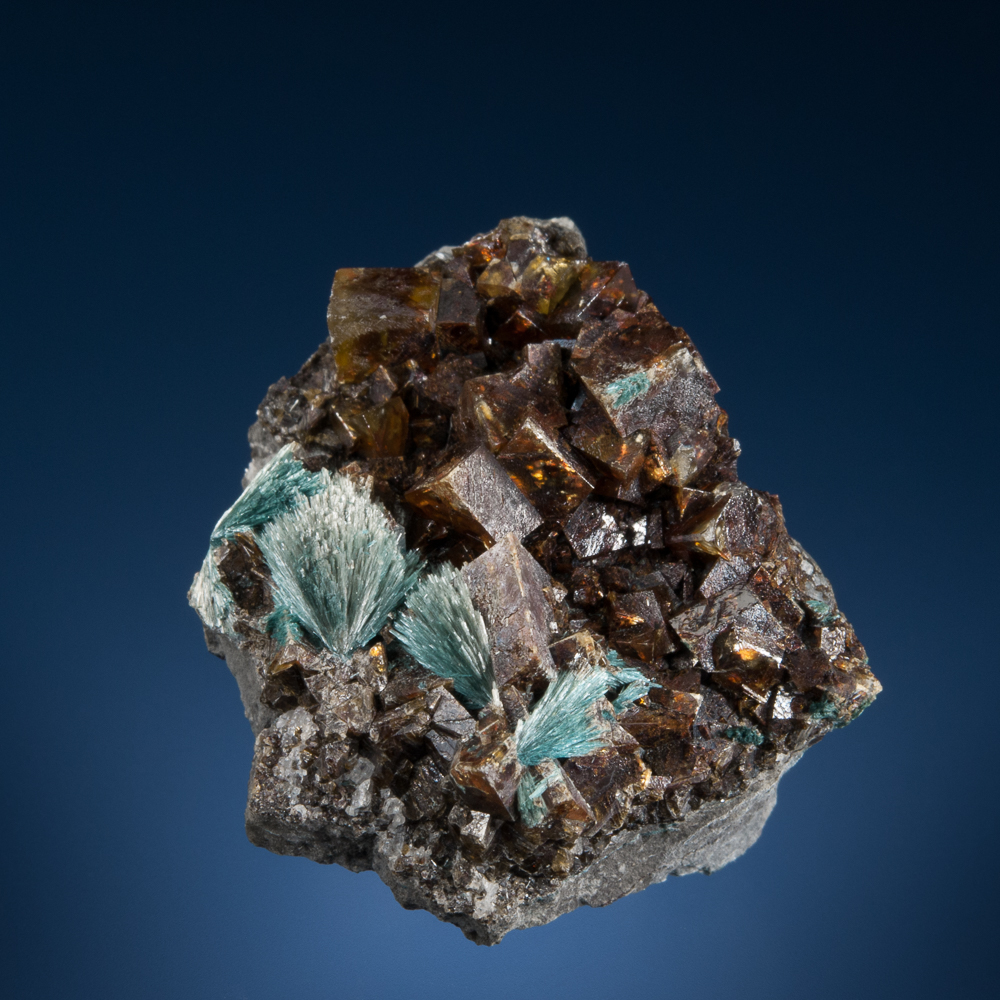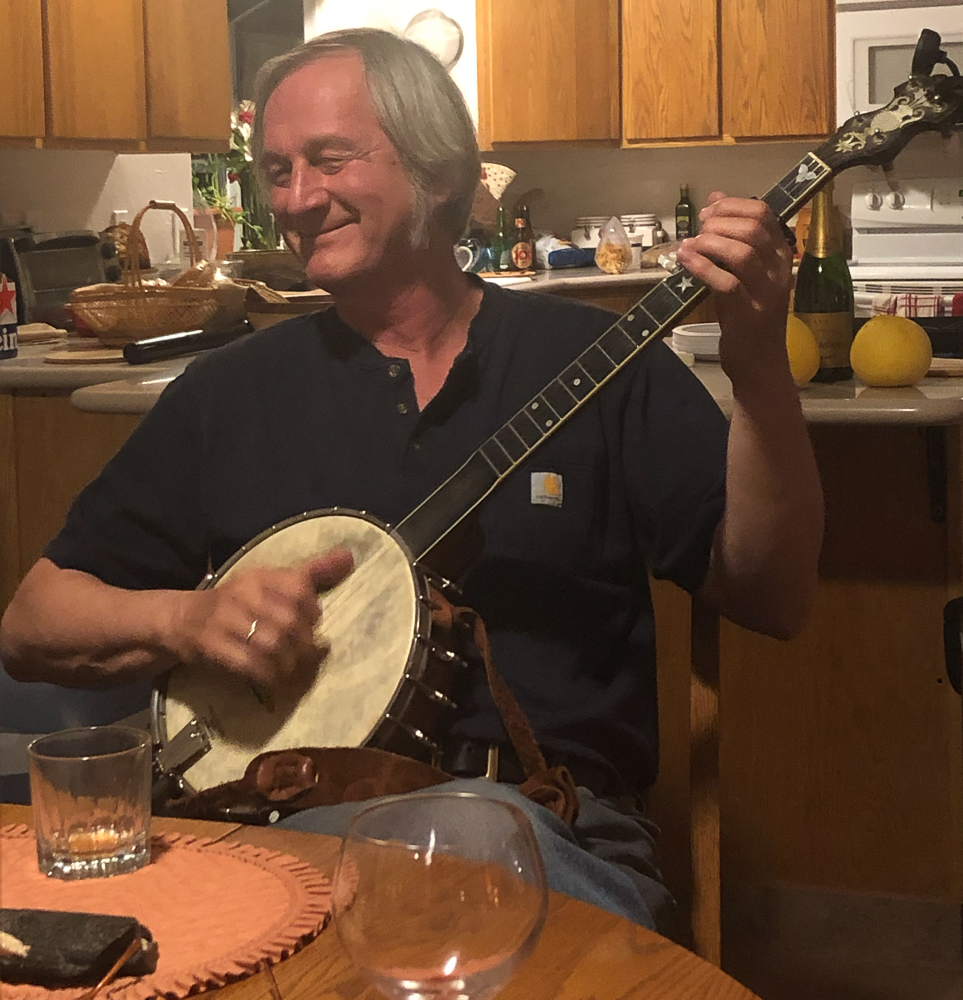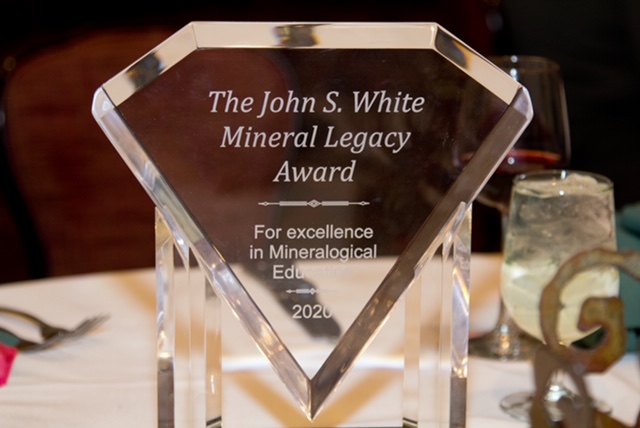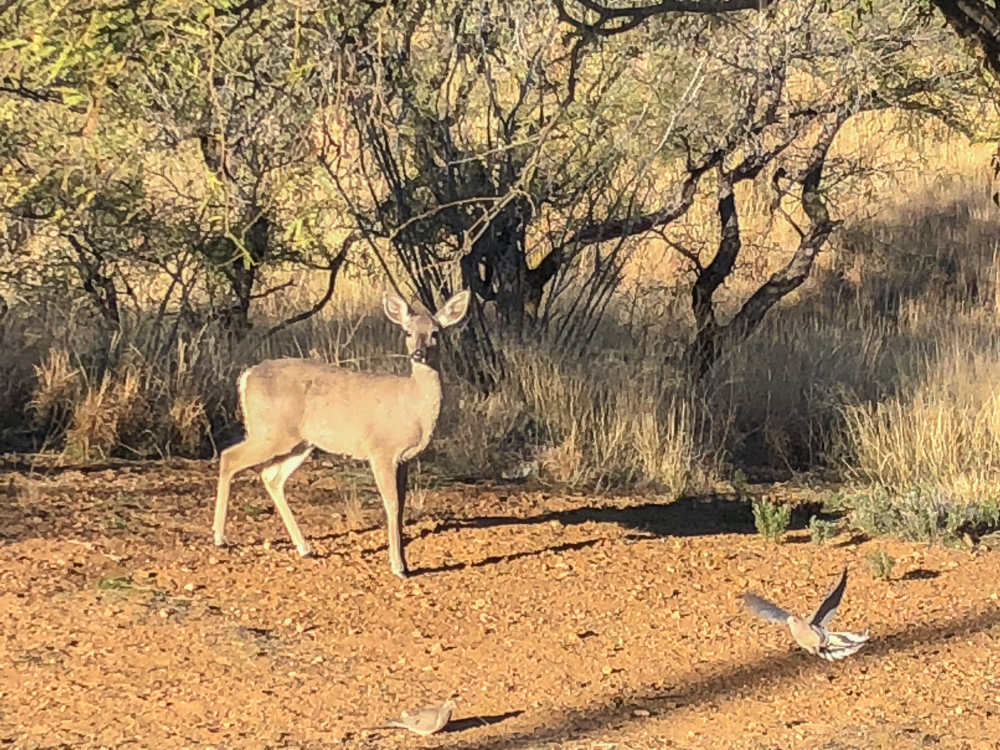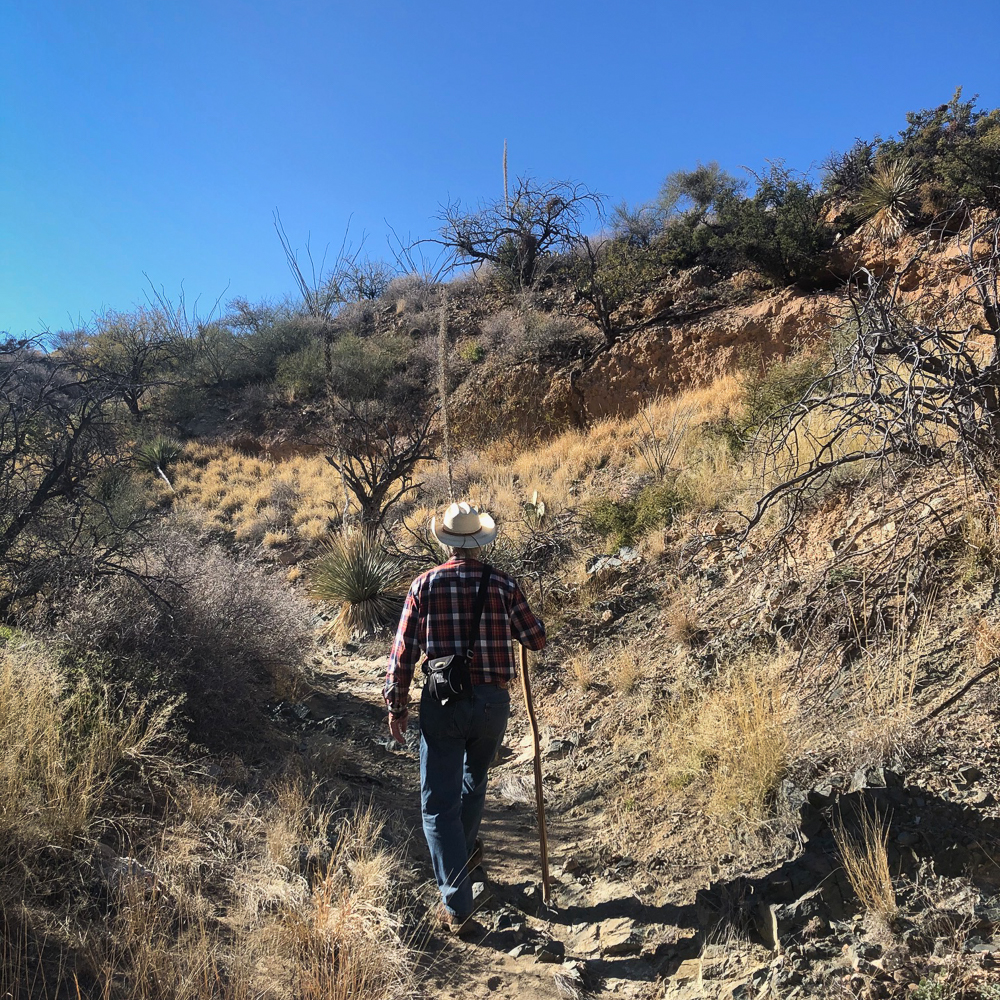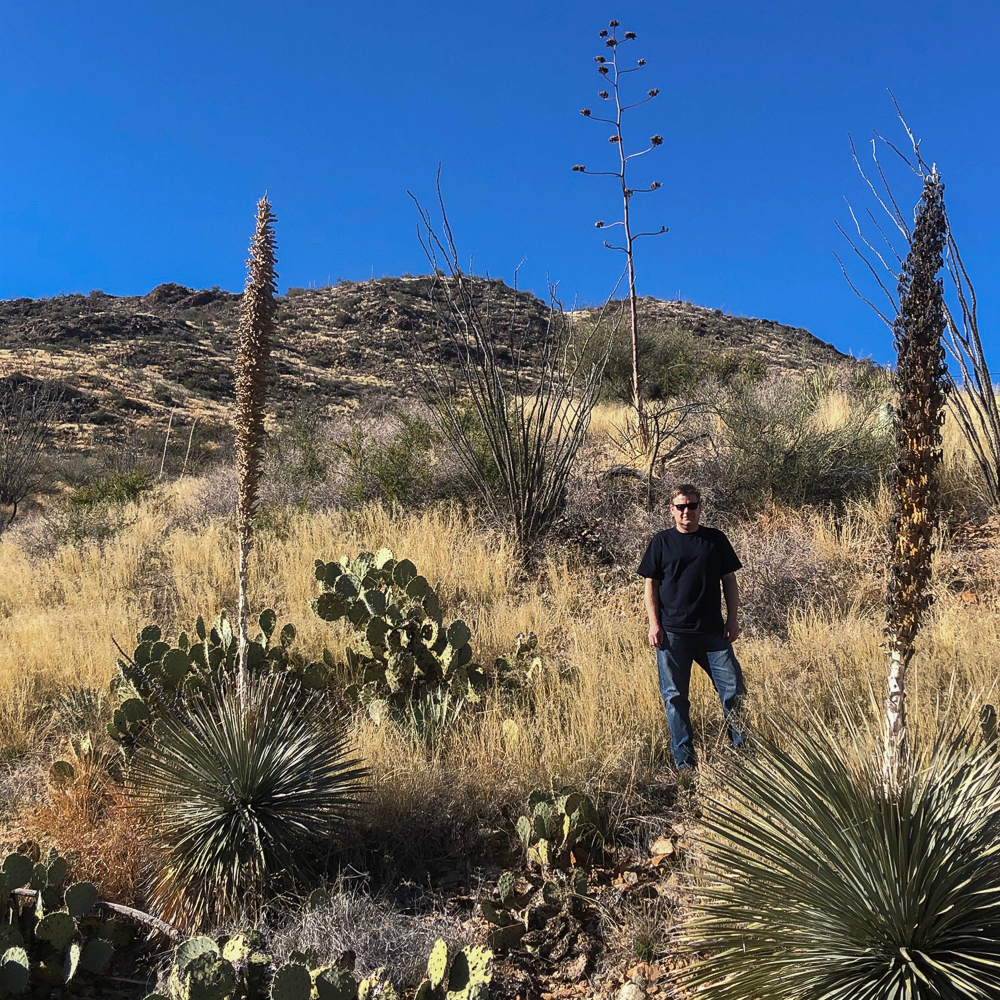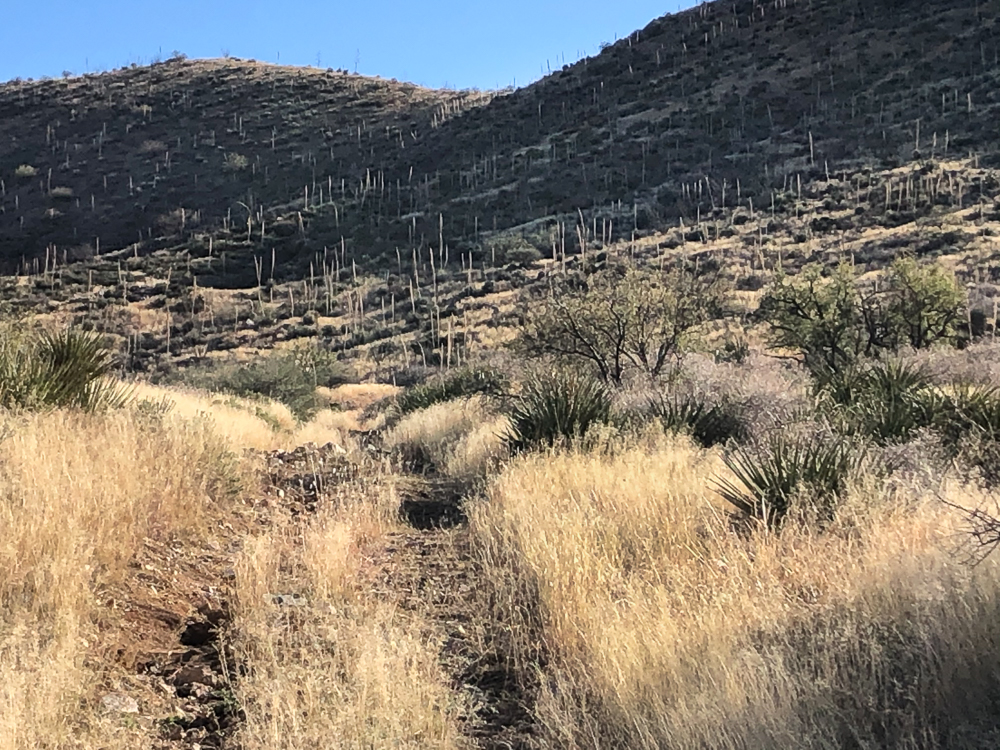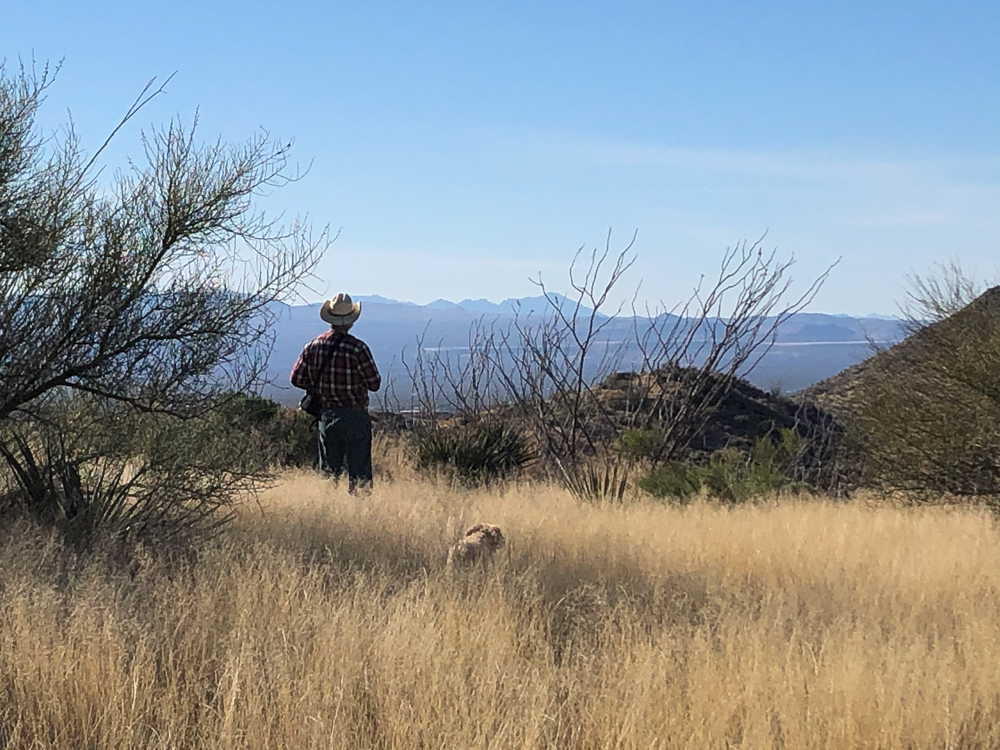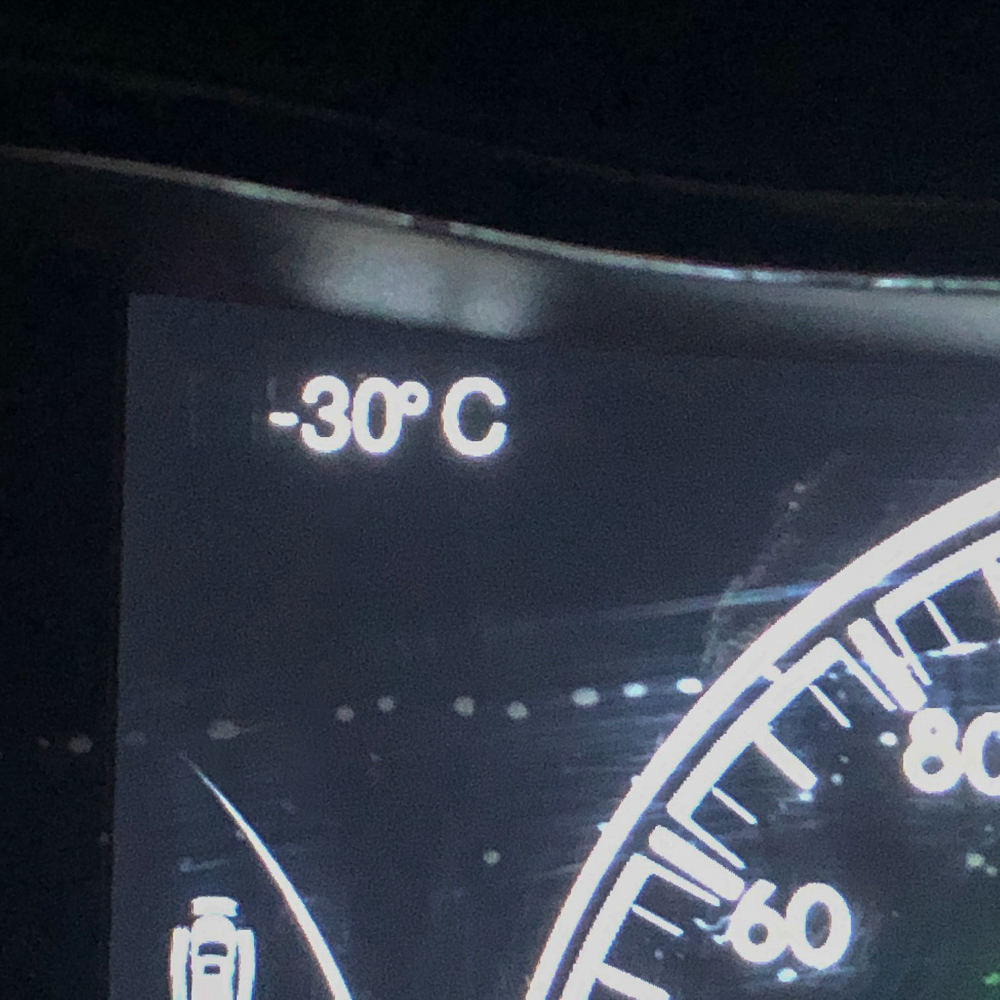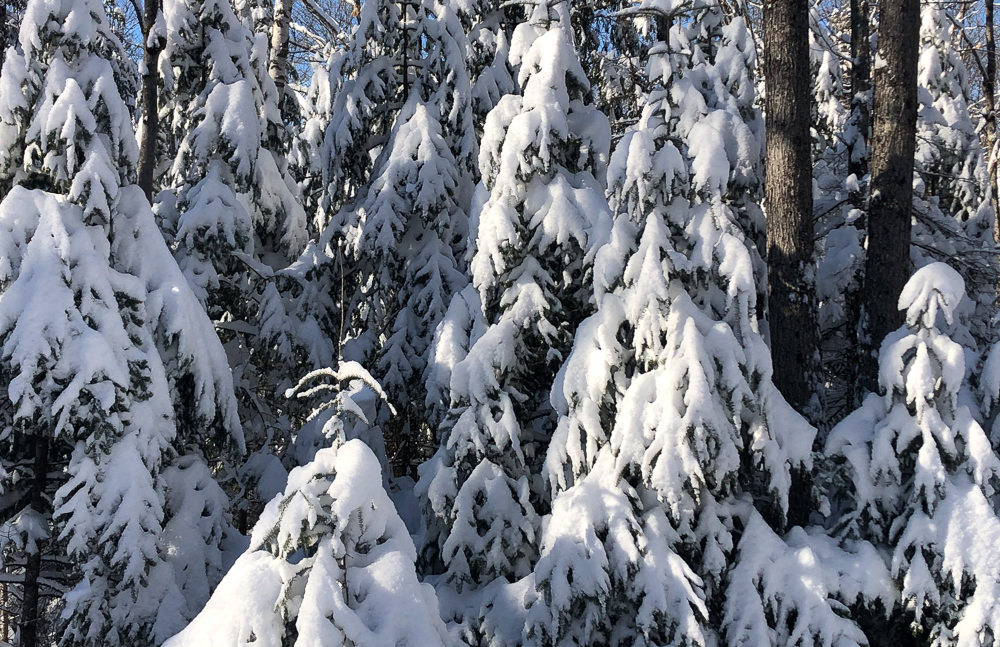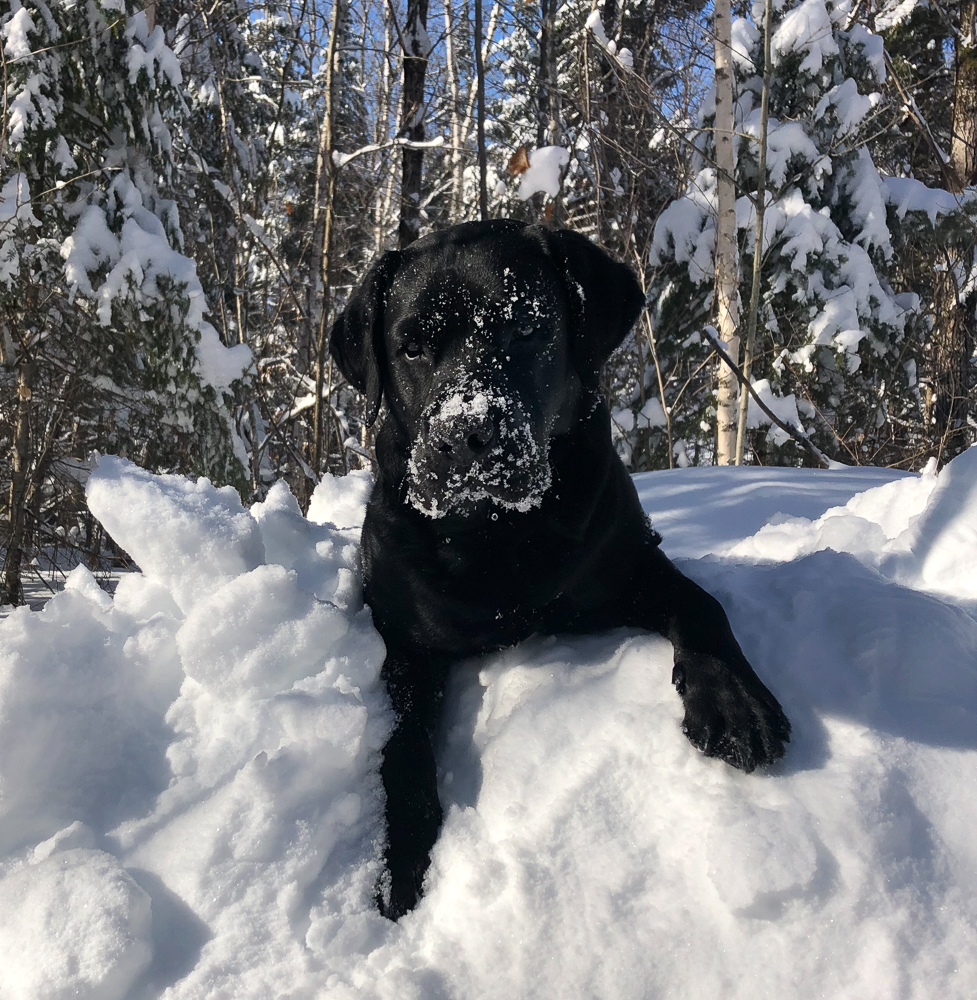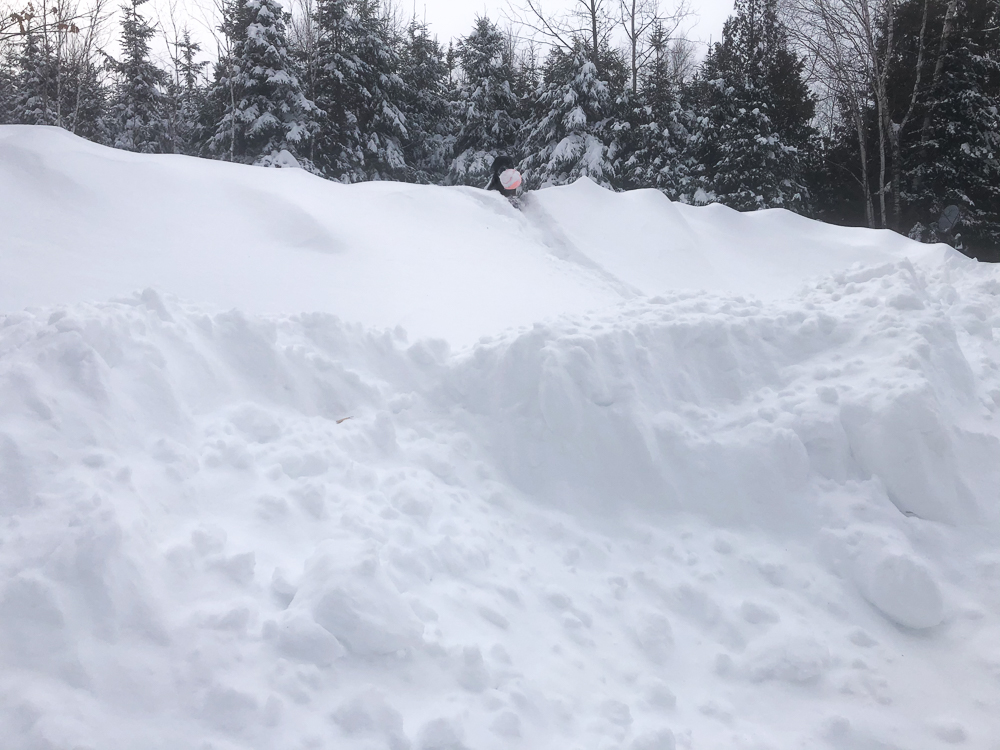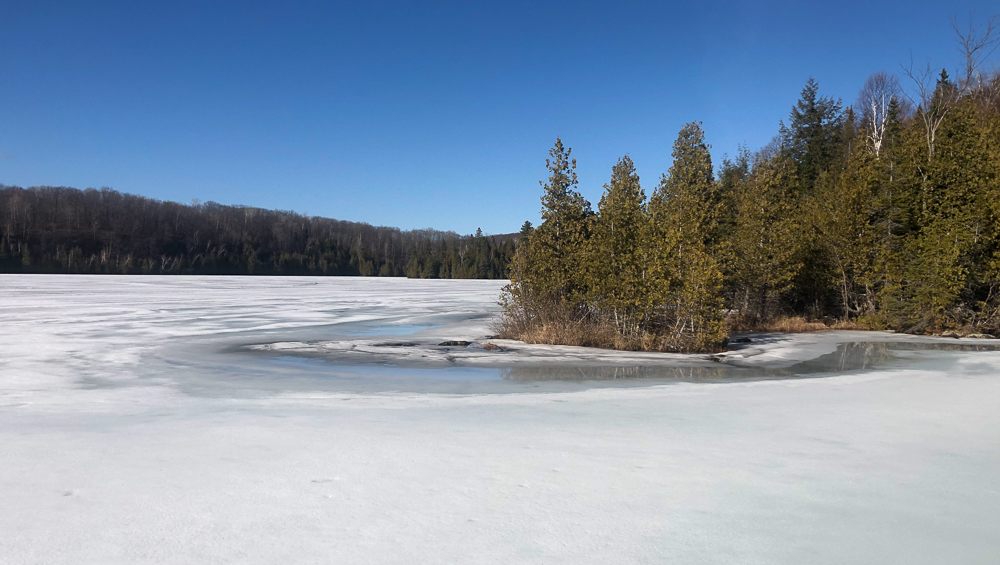Categories
Archives
In these strange days, it’s hard to believe how different the world was, only a few weeks ago. Who imagined then, all the ways in which our lives would be impacted in the weeks after Tucson… As events evolve, it’s clear that it will be a while until all of us are once again together at a large international show, which makes it all the more important to enjoy a few memories of our most recent gathering and stay connected online. In that light, let’s travel back to Tucson…
One of the best times of the year, the annual Tucson Gem and Mineral show is like no other time if the year for mineral people. It is gathering of countless thousands of mineral specimens! OKOK… not just specimens… it is one of the mineral collecting community’s finest annual gatherings, with friends from all over the world converging on Arizona to catch up and share, and talk a lot about minerals (and even life beyond minerals, heaven forbid).
Tucson is a great midwinter break for me and all of my northern friends – a chance to leave snow, ice and frigid temperatures behind for a bit. Instead of shades of white and grey, it’s blue skies, beige and every hue of green, not to mention the purple-blue shades of mountains all around the horizons.
I am lucky to be hosted by my friends David Joyce (davidkjoyceminerals.com) and Carol Teal, along with their dog Riley.
Riley and I have come a long way together – in the first year or two we knew each other, he had somehow failed to catch that I’m a dog person. I wasn’t speaking his language – I’m used to speaking Labrador Retriever. We’re sure good now though – he accepts me as a member of the pack.
We have an understanding that tummy rubs, ball throwing and treats are all part of the deal.
As always, Tucson was full of activity of all kinds, at shows spread out all over the city. It’s strange now to think that such a short time ago, COVID-19 was not a thought on many minds, and in Tucson there was virtually no visible indication of any difference – just lots of conscientious alternatives to handshakes and the occasional mask.
This year there was substantial movement of dealers and vendors around town. Of course this happens to some extent every year and the sands always shift over the longer term, as the individual shows and dealers evolve and migrate. Once upon a time, the Desert Inn was the place to be, and now it is no longer standing. Similarly, for many years, the show at the Best Western Executive Inn (also known as the “EI”) was the hub for a large number of dealers with the best selection of fie minerals. Years ago, the show moved to the Inn Suites (renamed the Hotel Tucson City Centre) and now the “EI” is closed and fenced for final demolition. In 2020, the Inn Suites completed its last contract year with the show organizers, and many dealers had already chosen to move to new venues. As for this show itself, the organizer is moving it to the Hilton Conquistador, up in Oro Valley – it remains to be seen what will happen at the Inn Suites next year. I’ve always really liked the setting at the Inn Suites and will miss the times when it was the major hotel show!
Having said which, the larger development unfolding at the same time has been the development and opening of the “Mineral District” just off North Oracle, with the Mineral City show and other related venues all within a couple of blocks of one another. The Mineral City venue hosts many excellent dealers and was greatly expanded into new buildings opened this year.
Meanwhile, another key spot in the Mineral District fully opened this year, as the conversion of the old La Fuente restaurant is now complete. It is the new main venue for Jewel Tunnel Imports (both the wholesale business and the selling of more of Rock Currier’s personal collection), as well as mindat HQ and the new location where you could have your favourites photographed by Jeff Scovil. Speaking of the new La Fuente, each restroom is particularly inclusive, inviting anyone:
Which makes a nice segue into a discussion of a few of the minerals in Tucson this year. Starting with JTI headquarters at La Fuente and Rock’s collection. As many of you will have seen in online reports, people lined up early in the morning to be able to see what was available. This was true for the original opening, and even to a lesser extent for each “refresh” opening, when they put out new material to fill spaces. Rock’s collection contained so many great high-quality pieces, including classic specimens, unusual localities and uncommon minerals and mineral associations.
Among the classics was this wonderful millerite from the Sterling Mine near Antwerp, New York – this is a fantastic specimen.
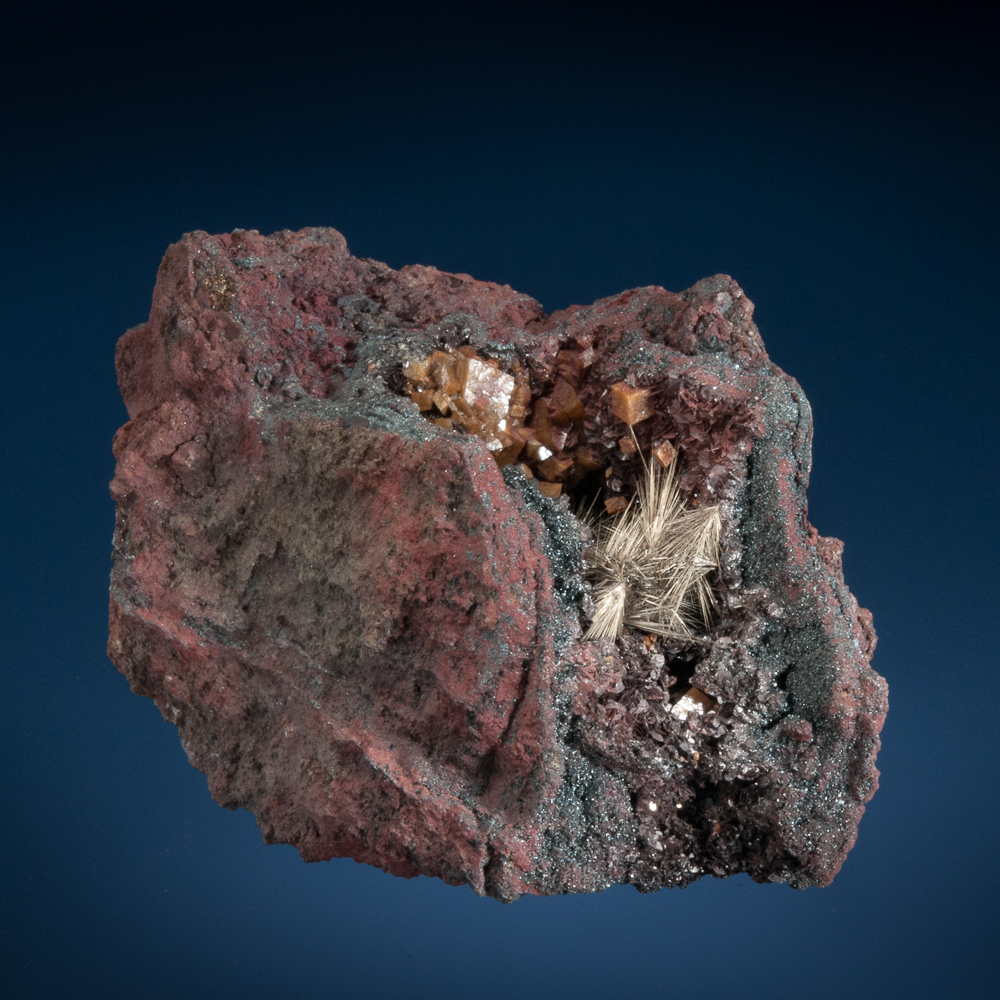
Millerite, Sterling Mine, Antwerp, Jefferson Co., New York, USA – 6.6 cm
For unusual specimens from unusual localities, Rock had a small number of very cool hematite crystals from the Democratic Republic of the Congo. Great crystal forms!
Hematite, Kamoto Principal Mine, Kamoto, Kolwezi, Lualaba, Democratic Republic of the Congo – 3.2 cm
Moving on to recent finds at Tucson 2020, there were gorgeous new bournonites from the Viboras Mine, Machacamarca District, Potosí, Bolivia. The locality has produced excellent bournonite specimens over the years, but the finds are have been sporadic, often years apart. The nature of the bournonite has varied from one find to the next, and some of the bournonite has been of modest lustre, sometimes dull, and of varying sharpness/definition. This latest find has produced sharp, lustrous bournonite crystals of the finest quality, exhibiting the classic “cogwheel" twinning.
Bournonite, Viboras Mine, Machacamarca District, Potosí, Bolivia – 5.2 cm
Bournonite, Viboras Mine, Machacamarca District, Potosí, Bolivia
Field of view 3.5 cm
Bournonite, Viboras Mine, Machacamarca District, Potosí, Bolivia – 4.2 cm
Bournonite, Viboras Mine, Machacamarca District, Potosí, Bolivia – 2.3 cm crystal group
Bournonite, Viboras Mine, Machacamarca District, Potosí, Bolivia – 4.1 cm
Bournonite, Viboras Mine, Machacamarca District, Potosí, Bolivia – 3.8 cm
Bournonite, Viboras Mine, Machacamarca District, Potosí, Bolivia – 4.9 cm
Bournonite, Viboras Mine, Machacamarca District, Potosí, Bolivia – 4.1 cm
There has been a new find of beautiful prehnite from Morocco (it seems Morocco somehow always comes through!). In fact several localities in Morocco have produced fine prehnite specimens over the years, but I love the prehnite from Taza, Fès-Meknès, Morocco.
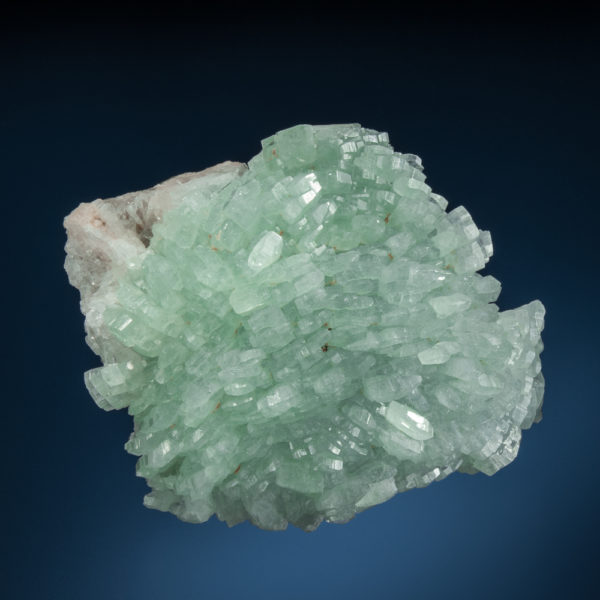
Prehnite, Taza, Fès-Meknès, Morocco – 8.6 cm
This prehnite occurs with minor quartz crystals, including one small crystal on one piece that looks to me to be a faden. The prehnite crystal aggregates exhibit two principal habits, sometimes together on the same matrix: (1) radiating balls of crystals and (2) radiating fans of varying size and thickness. These specimens are quite different from most prehnite balls and aggregates, in that the individual crystals are easily visible and differentiated/separated from their adjacent neighbours – they are sharp and lustrous with individual terminations. The colour of these specimens is a pretty green – they are so nice!
 Prehnite, Taza, Fès-Meknès, Morocco – 9.1 cm
Prehnite, Taza, Fès-Meknès, Morocco – 9.1 cm
 Prehnite, Taza, Fès-Meknès, Morocco – 10.0 cm
Prehnite, Taza, Fès-Meknès, Morocco – 10.0 cm
Prehnite, Taza, Fès-Meknès, Morocco – 5.8 cm
Also from Morocco, from a find at Mibladen that originally debuted at Munich last fall, are vanadinite specimens in a habit we only see once in a while, in some rather good-sized crystals for the species. These are the somewhat complex, somewhat skeletal-growth crystals, often in small aggregates. The colour and lustre varies, including on the same specimen, depending on the viewing angle. They are super-cool vanadinites.
Vanadinite, Mibladen, Morocco – 3.7 cm
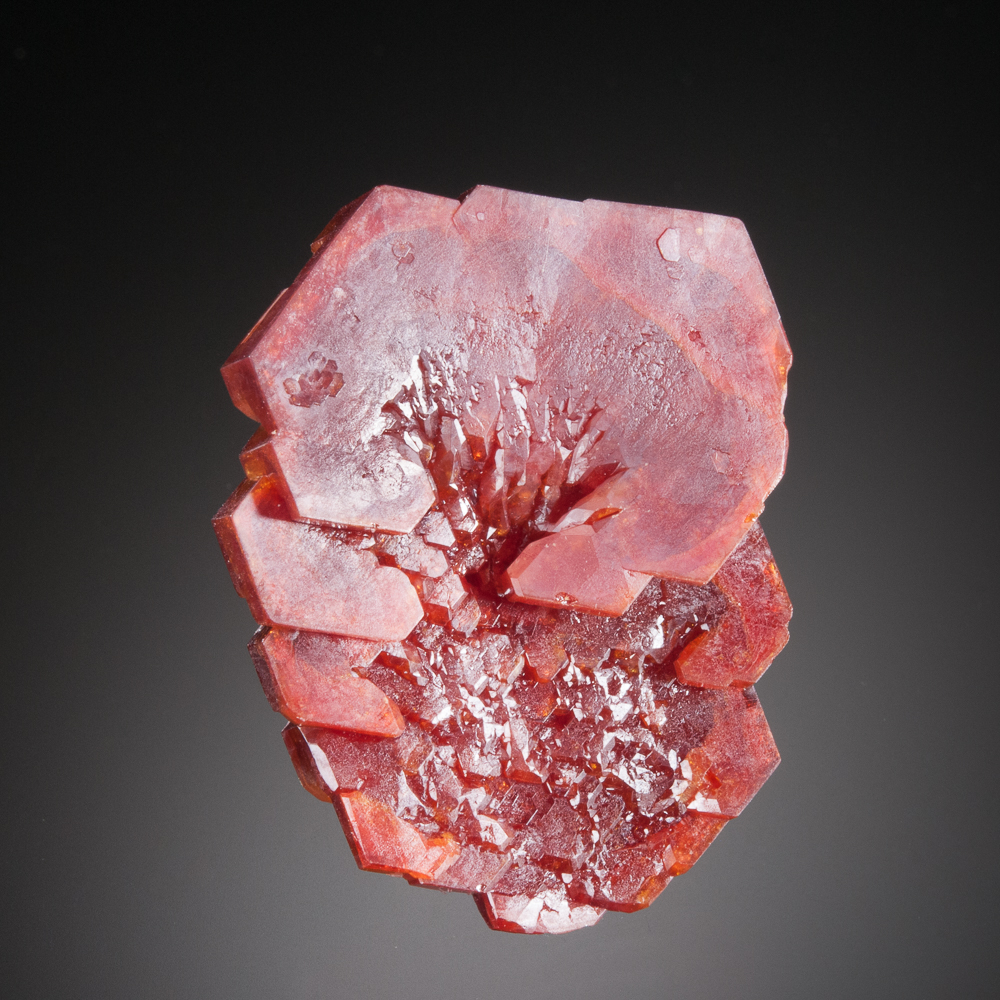 Vanadinite, Mibladen, Morocco – 3.7 cm
Vanadinite, Mibladen, Morocco – 3.7 cm
One last entry from the African continent from me – welcome to my nightmare…
I include this next photo partly to show just how hard it is to secure fine mineral specimens. As many of you know, I’m very fond of the best of the prehnites, epidotes and good yellow stilbite balls from Mali. They are wonderful specimens and they make beautiful display pieces, adding colour and form to any display case. The prehnites and epidotes have been coming out for quite a few years now, and the good stilbites have been trickling out – I seek out excellent specimens, particularly of the stilbite which are so nice for the species. It has become evident that the problem is not that there aren’t any in the ground – rather, it’s what happens to them next. Many are thrown into sacks and buckets, then transferred to other containers with little or no packaging. This is a process no fine mineral specimen – but particularly stilbite – can be expected to survive… As an example, here’s a photo of an actual Mali specimen-packing job, arrived at Tucson for sale.
Bucket O’ Mali
(The specimens in this bucket are now completely damaged/destroyed and of no value to collectors of fine minerals.)
As an aside, I’ve been building a small collection of excellent Mali specimens for a future update – was only able to add a couple nice small pieces in Tucson (sadly, none from this vendor!), but there will be some really nice specimens coming in that update.
Moving on to Asia, some nice entries from localities that have recently been producing fine specimens. From Balochistan, Pakistan comes another new find of epidote fans and quartz. The epidote fans are sharp and very lustrous, with high-lustre terminations. Some are partially-to-fully included within quartz crystals, but this was uncommon in the material I saw. It’s too bad the percentage of fine specimens was not higher, as they are really beautiful combination-pieces, but most were badly damaged. I acquired a small lot of choice specimens.
Epidote fans on Quartz, Kharan, Balochistan, Pakistan – 5.8 cm
For a few years, we’ve seen the lollingite specimens from the Huanggang mines (Inner Mongolia, China) that redefined the species. The best are the world’s finest by far (for example, John White’s – if you have not admired that one, it’s here). Specimens have never been plentiful and those pieces we do see available are damaged (I know, my common complaint from urban field-collecting expeditions…). I found a very small number of excellent specimens from one of my Chinese friends.
Lollingite, Huanggang Mines, Inner Mongolia, China – 4.6 cm
Also from China, over recent years we’ve seen some creedite specimens from Qinglong. In Tucson I acquired three with a light lavender hue – very pretty specimens!
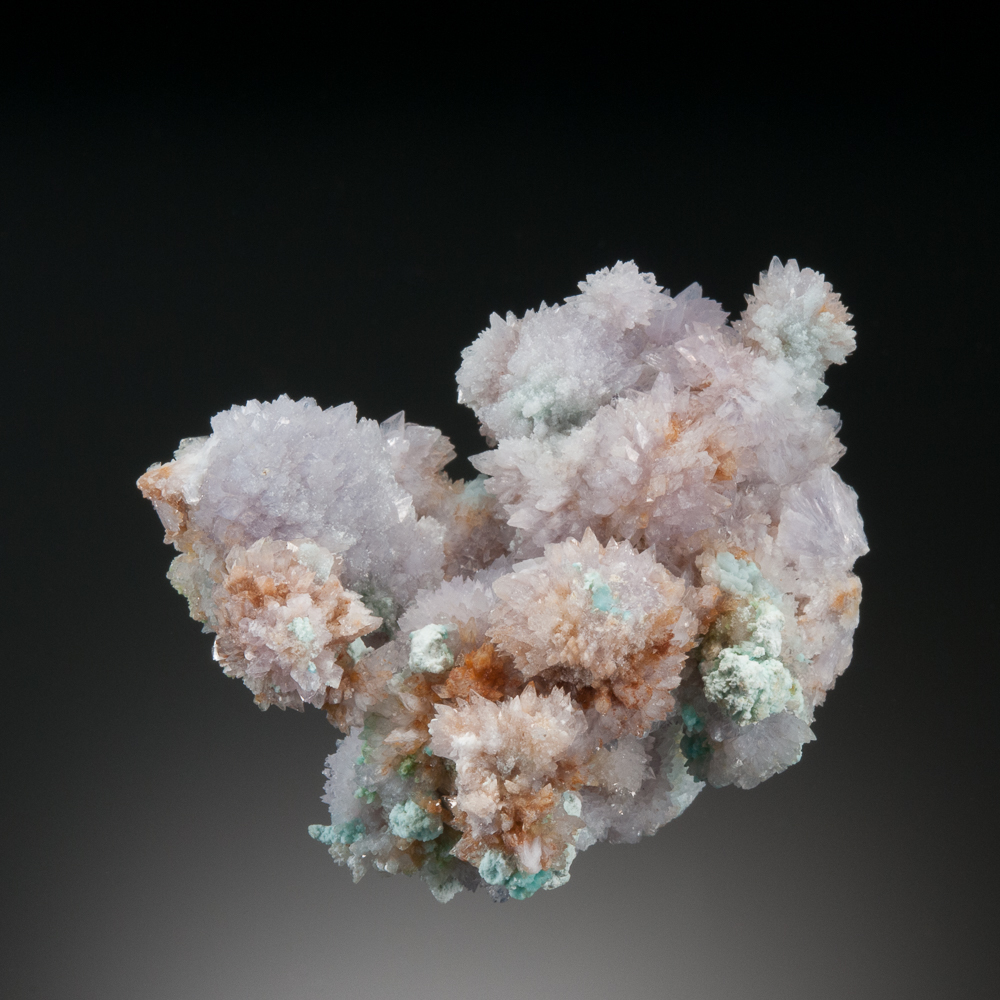 Creedite, Qinglong County, Qianxinan, Guizhou, China – 8.5 cm
Creedite, Qinglong County, Qianxinan, Guizhou, China – 8.5 cm
And I’m going to finish with some specimens that some people might consider a bit less pretty, but given their rarity and where they come from, they are worthy of a grand finale. From one of Canadian dealer Rod Tyson’s expeditions to the Yukon several years ago, some excellent specimens of the Rapid Creek phosphate minerals were available in Tucson. Expeditions to this remote part of Canada have become difficult to arrange and have also become extremely costly of late (they require a lot of helicopter time). Rod feels it’s tough to predict what, if anything, will come out in the foreseeable future. For several of the species found at Rapid Creek, specimens from there are the best from anywhere.
Kulanite, Rapid Creek, Dawson Mining District, Yukon, Canada
Main ball of crystals 0.9 cm
Gormanite on siderite, Rapid Creek, Dawson Mining District, Yukon, Canada – 3.2 cm
Of course the Tucson experience is about so much more than the minerals. Meals and maybe a couple beverages with mineral friends from all around the world, sometimes accompanied by music…
David Joyce leading the songs with his banjo. (Not pictured: a bunch of us singing along..).
As happens every year, I am always already home before the main show and related festivities, so I obviously am not able to report on them. However, there was one important development in Tucson that I do not want to miss mentioning. This year is a special year as it represents the 50th anniversary of the founding of the Mineralogical Record. And of course, the Mineralogical Record was founded by John S. White (if you have not already, you can read about that here). This year in Tucson, a new award was unveiled and presented at a dinner held by Jordi Fabre and Jim and Gail Spann: John was the first recipient of what will be the annually-awarded John S. White Mineral Legacy Award For Excellence in Mineralogical Education. Every year from now the same wording will appear on the awards to future recipients – it will always be, in fact, the John S. White Mineral Legacy Award. John called it “the mother of all humbling experiences". Which is of course the kind of thing he’d say. He’s always been humble about those early days of the Mineralogical Record. But it’s pretty incredible to think that at 36 years old, with a young family and full-time job at the Smithsonian, he founded this magazine. So many mineral collectors owe a good part of their knowledge to the publication he created. So many serious collectors have the Mineralogical Record in their home. He has touched the lives of literally thousands and the award could not be more fitting.
And on a final note about this beautiful part of Arizona, I confess that this beauty is an aspect of the Tucson experience that I really did not take in properly for the longest time. Time on these visits is at such a premium – and it was especially so when I was taking time out of my last career to do it – there are so many minerals to see, so many mineral friends and so many good times together. Until recently, I never took the time to immerse myself in just how amazing this place is. I have Dave and Carol to thank for that, not only because they live in a beautiful little nature paradise, but also because they love to enjoy it. I thought I’d share a few photos from our time the Santa Rita foothills.
I swear I did not pay the deer and doves to pose – it’s naturally as idyllic as it looks..
This is a great area for hiking (as long as you give the sharp plants lots of clearance!). Dave led the way…
Some of the plants are astounding. The Tucson show does not correspond with most flowerings, but looking at last year’s yucca and agave stalks… they are huge. Here’s a sense, with me for scale:
The stalks dominated the landscape in places, making for unusual and beautiful scenes.
And of course one can see such expansive vistas from the lookouts…
Riley catching up with Dave to take in the view…
Goodbye Tucson, til next time.
As always, I love being away and I love coming home.
Bit of a temperature change from Tucson (20c/68F) to Bancroft that night…
(-22F…)
We had lots of snow once again this year, beautiful in an entirely different way from Arizona.
And of course Rudy is in heaven in it…
Again this year the snowbank beside our house (known each year as Mt. Rudy) grew to a major height, width and depth – that’s Rudy (full-grown Labrador Retriever) for scale at the top with a normal-sized soccer ball in his mouth.
I’m happy to say that because I’m writing this so late this year, Mt Rudy is now much reduced in size, only about 5 ft high (it will be all melted in May). And as happens every spring, the lake is beginning to thaw. In the sun, there’s a bit of water on the ice on a warmer day, but I can see that as of now the ice at the margin of the dock is at least a foot thick…



